This is probably one of the most famous lavender fields in all of France. It is cultivated by the monks of the Abbaye de Sénanque and blooms in early summer. By the time we got here it was all over. We hadn’t intended to come but the road from Venasque to Gordes was closed at Sénanque and we could go no further, so we turned around in the car park. That was the nearest we got.
I’d seen its beautifully plain Romanesque cloister before on the cover of this CD by Ensemble Organum. Click on the play button below for a harmonious musical accompaniment to this post.
A couple of days later, returning from Château la Coste, we stopped off at the Abbaye de Silvacane.
We’d been here before and I loved its simple, unadorned beauty. On our previous visit we’d been accompanied by the sound of ecclesiastic chant echoing around these walls. Not a recording broadcast from a speaker, not a choir of performing monks but a fellow tourist singing the song of the building.
This time the space echoed with the musical cries and laughter of children’s voices, sounding it out.
Window Light / Stone Flower / Plain Song / Echo Chamber / Memento Mori
Back outside, in the giant plane tree the cicadas sang their own plane song and the snails were all ears.
Later, in a book of photographs of Provence, I discovered the Abbaye de Montmajour, yet another Romanesque abbey described as a place of peace and contemplation, so another day returning from Arles we stopped off at Montmajour expecting more graceful geometry and empty, serene spaces.
What we found was a sequence of beautiful galleries occupied by Mon île de Montmajour, an exhibition curated by Christian Lacroix from works in the collection of CIRVA, Centre International de Recherche sur le Verre et les Arts plastiques (International Centre for Research in Glass & Contemporary Arts). I picked up an exhibition guide but it’s in French so please excuse my poor translations. I hope I attribute the pieces correctly. The first space was the Crypte with seven chapels.
This is Espace Résonné by Pascal Broccolichi, made from verre soufflé et dispositif sonore but I didn’t hear anything. I must have missed the sound device. All I saw were exquisitely blown glass vessels.
These are Christian Lacroix’s costumes for the female choir in Verdi’s Aïda for Cologne Opera, 2010.
These glass vessels are by the distinguished stage director/playwright/choreographer, Robert Wilson, titled Concept 1 – 7, 1994/2003 (I’m reminded of Paul Motian’s wonderful album Conception Vessel).
A ramp took us from the Crypte to the Église, a carved rune on the wall a sign of what was to come.
We were met by the awesome and elegant spectacle of Beautiful Steps #4 by Sabrina Lang & Daniel Baumann, a swirling, flying spiral staircase, perfectly framed in the huge vaulted space of the nave.
Underneath in the apse, an arrangement of red glass balls, Le Petit Ange Rouge by James Lee Byars
Robe de Mariée de Philoména de Tornos, Duchesse de Vendome, wedding dress by Christian Lacroix.
Le Loukoum Rose d’Aziyadé by Paul-Armande Gette. Molten glass & gypsum become Turkish delight.
For Birds by Jean-Luc Moulène, a blown glass bell encased in a wire birdcage like a trapped bubble.
These next pieces were surprising. I’ve known Terry Winters‘ work since the 1990s, he’s one of my favourite painters, but I had no idea he made sculptures. This table full of playful, biomorphic figures, like frozen soap bubbles, is called Marseille Template. Maybe they’re ingredients for a painting?
There were a couple of large canvases by Gérard Traquandi, Pour Montmajour 1 & 2, dark paintings with minimal content, suggesting perhaps nocturnal windows on moonlit foliage.
Next door in the Sacristie, traditional storeroom for liturgical vestments and the reliquary of the True Cross, was a display of richly embroidered copes, pluviales, dalmatics and chasubles. It was visible only from the threshold and, compared to the naked elegance of the rest of the building, it appeared distinctly overdressed. It could almost have been the wardrobe for the fashion show in Fellini’s Roma.
In the Salle Capitulaire there were many things but only this caught my eye. It is Untitled by Hreinn Friðfinnsson, half-vessels on a mirror, its meaning open to speculation. Maybe this will help, or this.
Then into the Cloître with its cool shade and bright carvings, and in the full heat of the quadrangle there’s a glimpse of Ongle by Giuseppe Penone, a glass ‘fingernail’ over a bundle of branchwood.
At the far side there’s the sudden, shocking appearance of the Nightmare Choir, though they pose courteously for the camera. Costumes by Christian Lacroix for Verdi’s Aïda, Cologne Opera, 2010.
Next was the Tour, formerly the dungeon, now an observatory for a Planétarium by Jana Sterbak.
As we climbed the stairs of the tower we passed a locked door. A little higher and there was a window with a view into the locked cell. Imprisoned inside was Le Cortège Endormi by Jean-Michel Othoniel.
On the wall by the doorway onto the roof a palimpsest visitors book for those who have gone before.
The view from the tower over the marshes of Arles with a distant group of white Camargue horses. This was once a rocky island sanctuary, the Mont Majour, rising above the surrounding marshlands.
Down below and the next port of call was the monastery of Saint-Maur. In the Parloir there was another display by Gérard Traquandi, this time large photographic monoprints, resino-pigmentypes with rich, velvety blacks, depicting a dark undergrowth of tangled branches and a large, rudimentary vessel-shape formed from a mauled lump of clay like a kind of three dimensional action painting.
In Saint-Maur there were glassworks by Pierre Charpin, handmade sheets of vibrant stained glass.
Finally, in the shadow of the tower, the rocky outcrop that is the foundation stone of the abbey is riddled with holes. They are perfectly human-sized alcoves; I was tempted to see how they fit. This is not an artwork by Antony Gormley but a rock cemetery, a necropolis, the monks’ final resting place.
For more details of the exhibition try this pdf – Mon île de Montmajour.


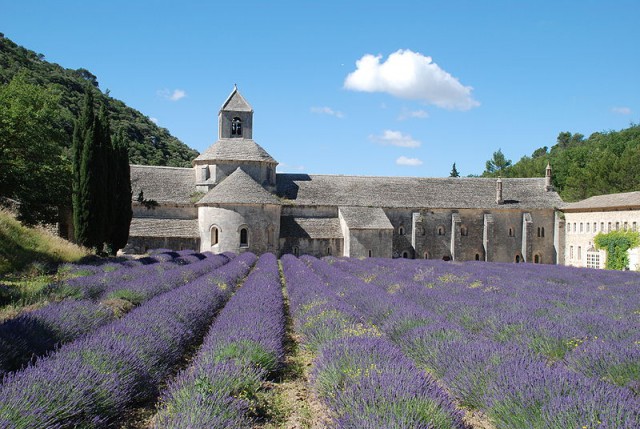

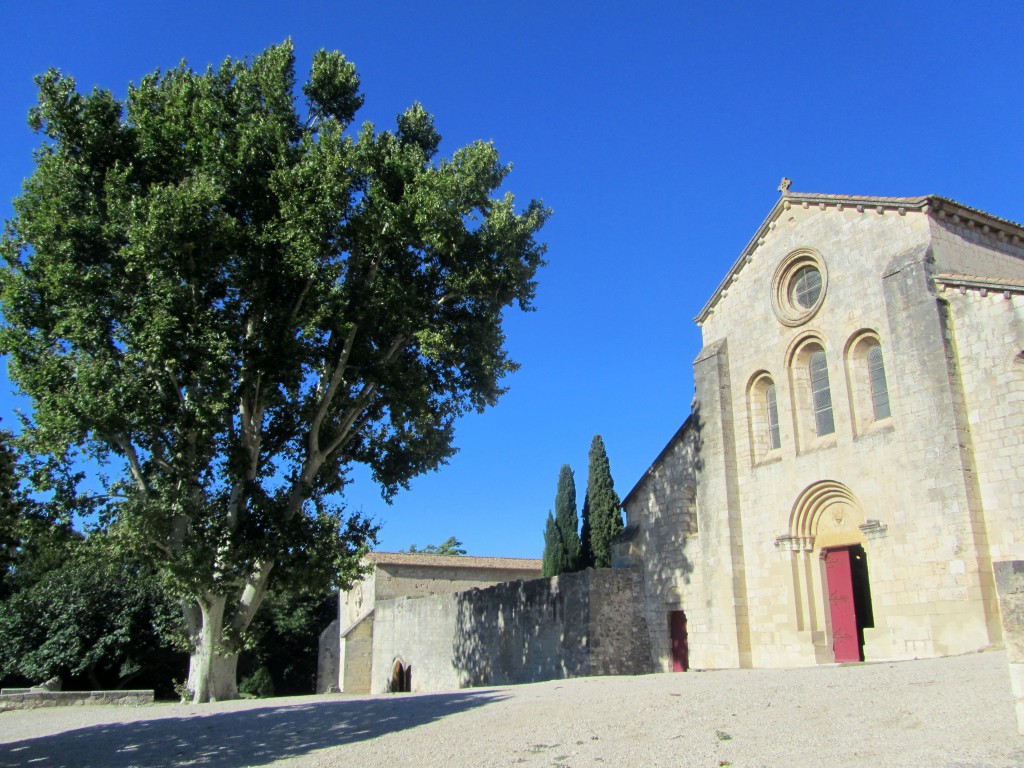
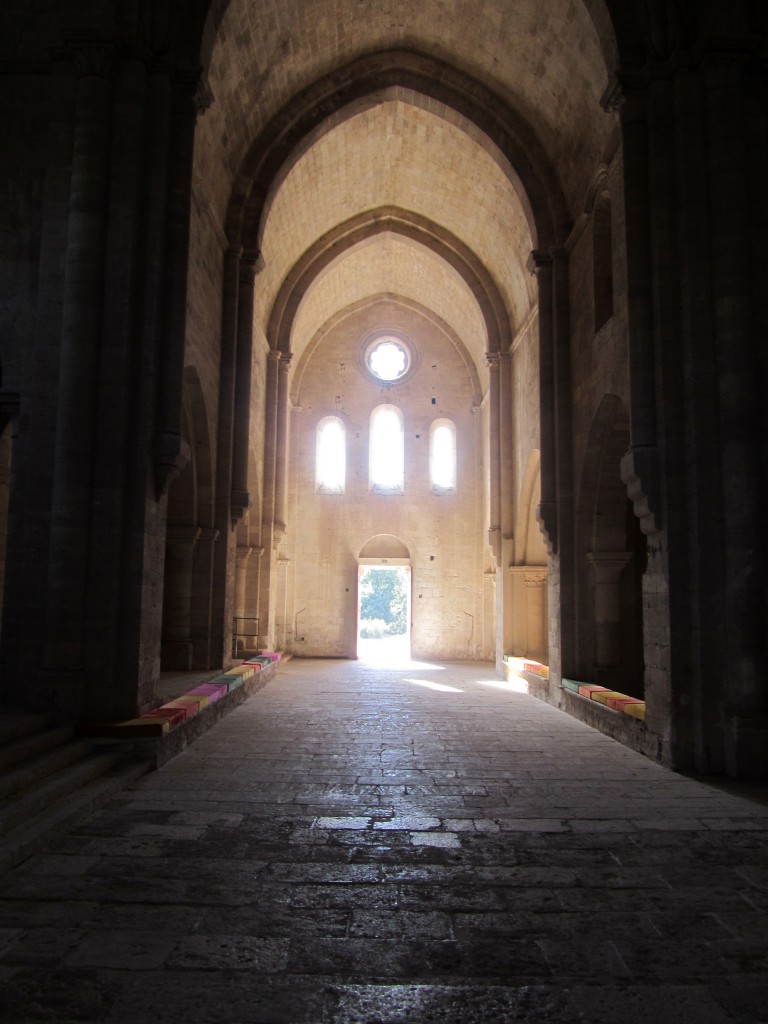
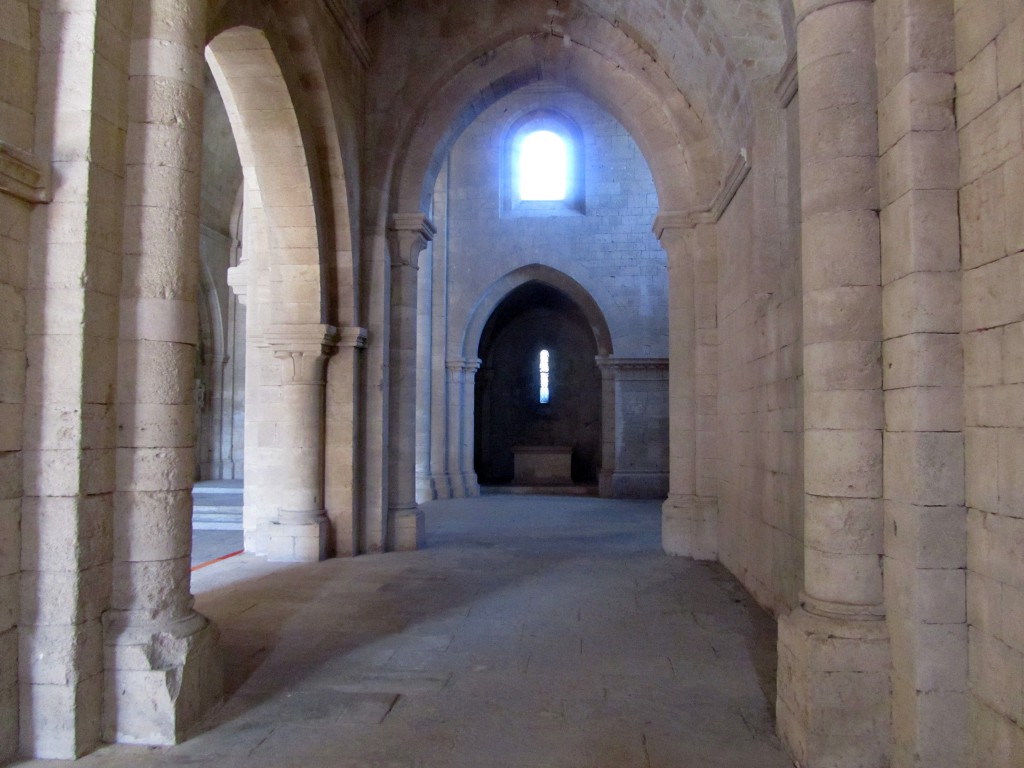
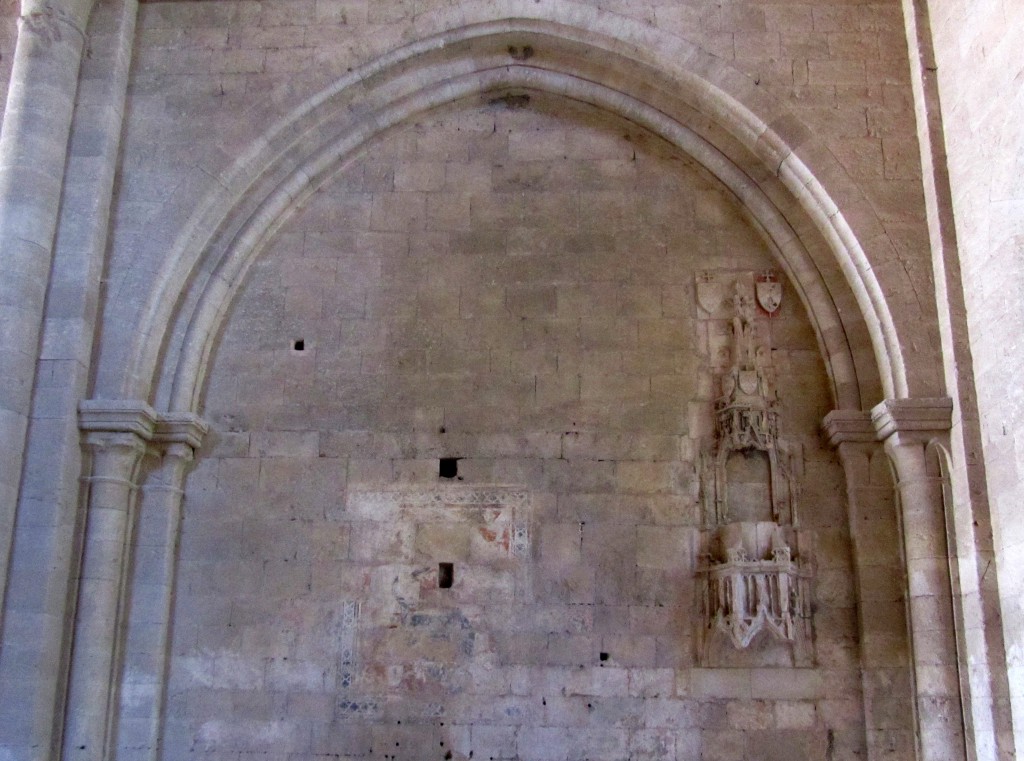
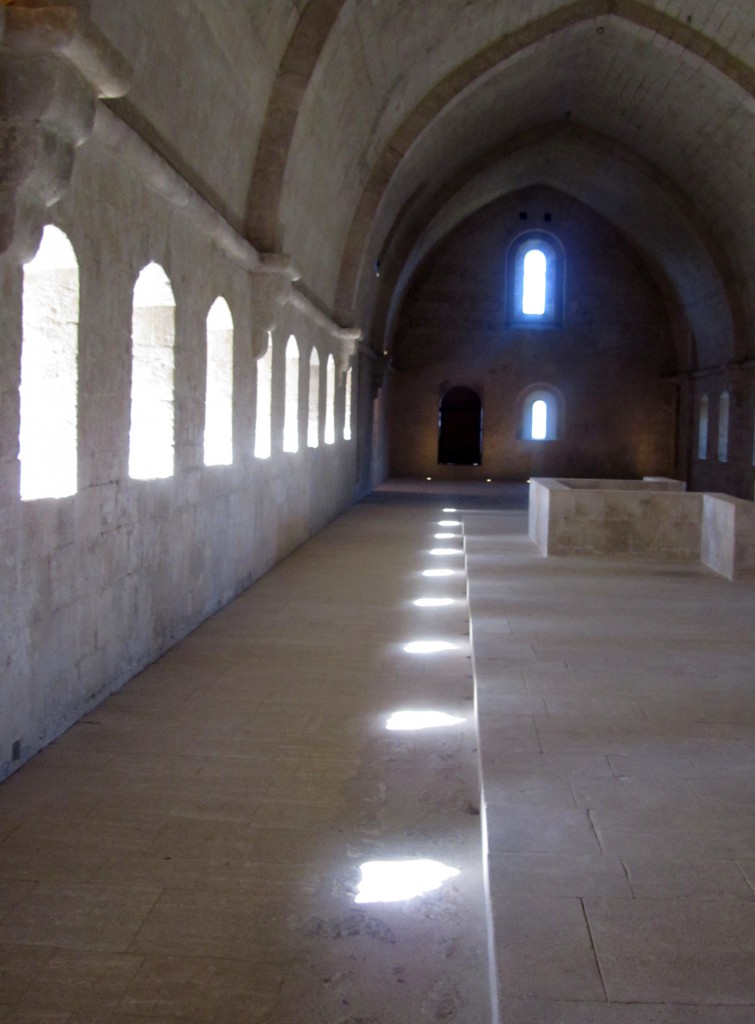
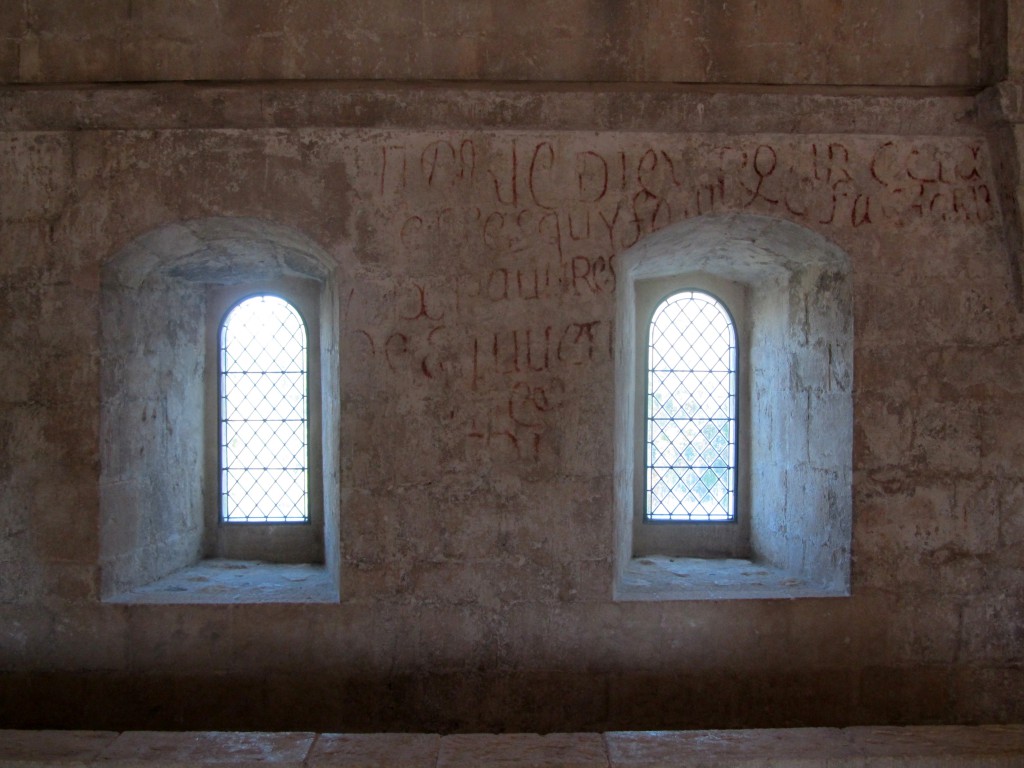
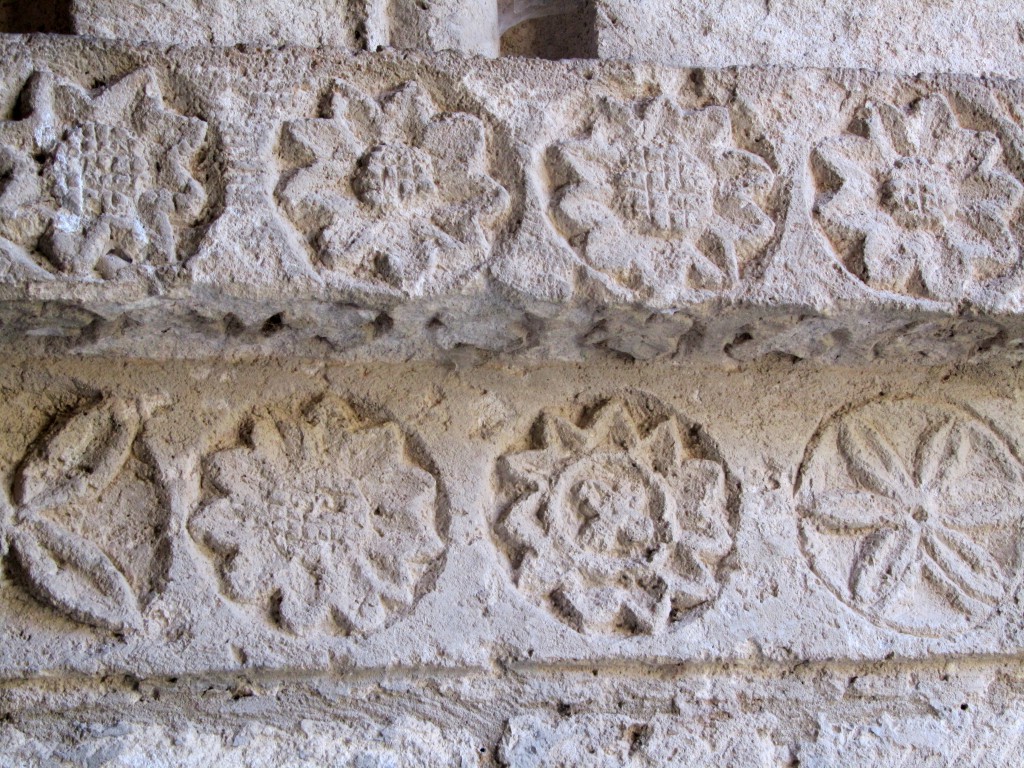
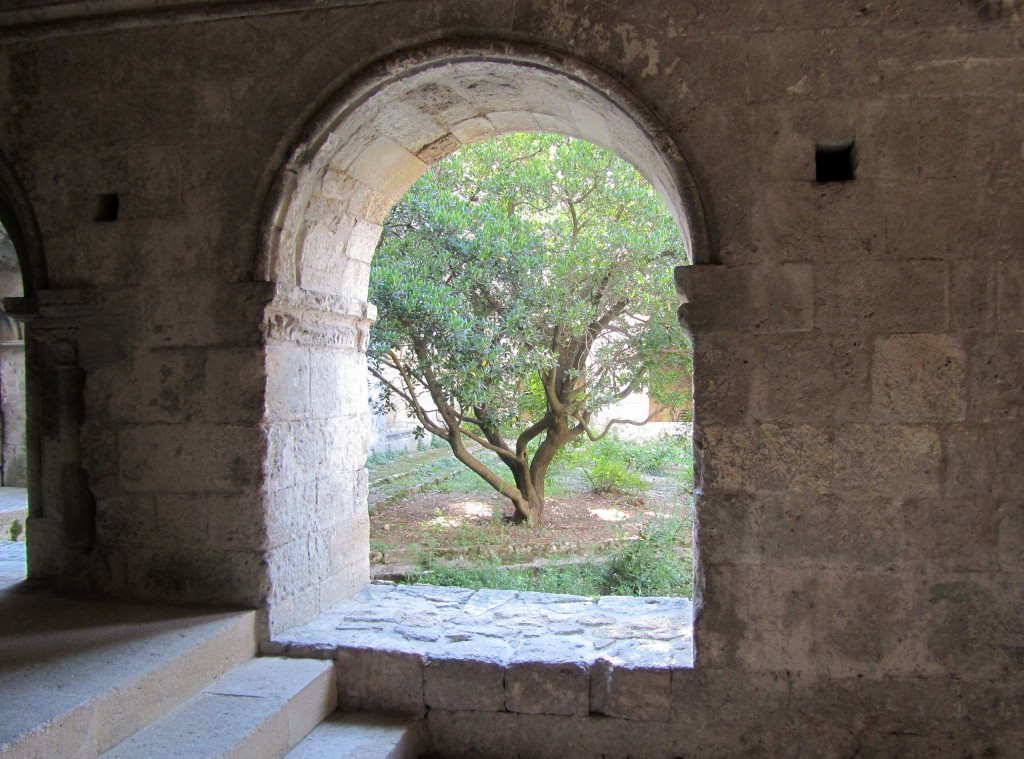
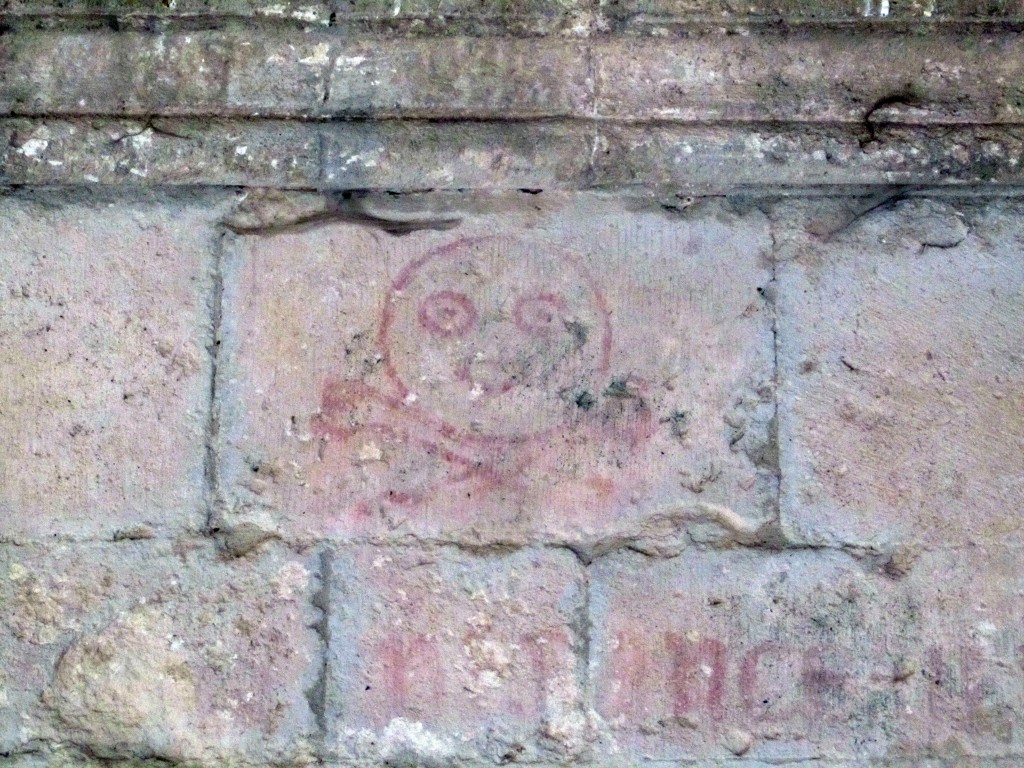
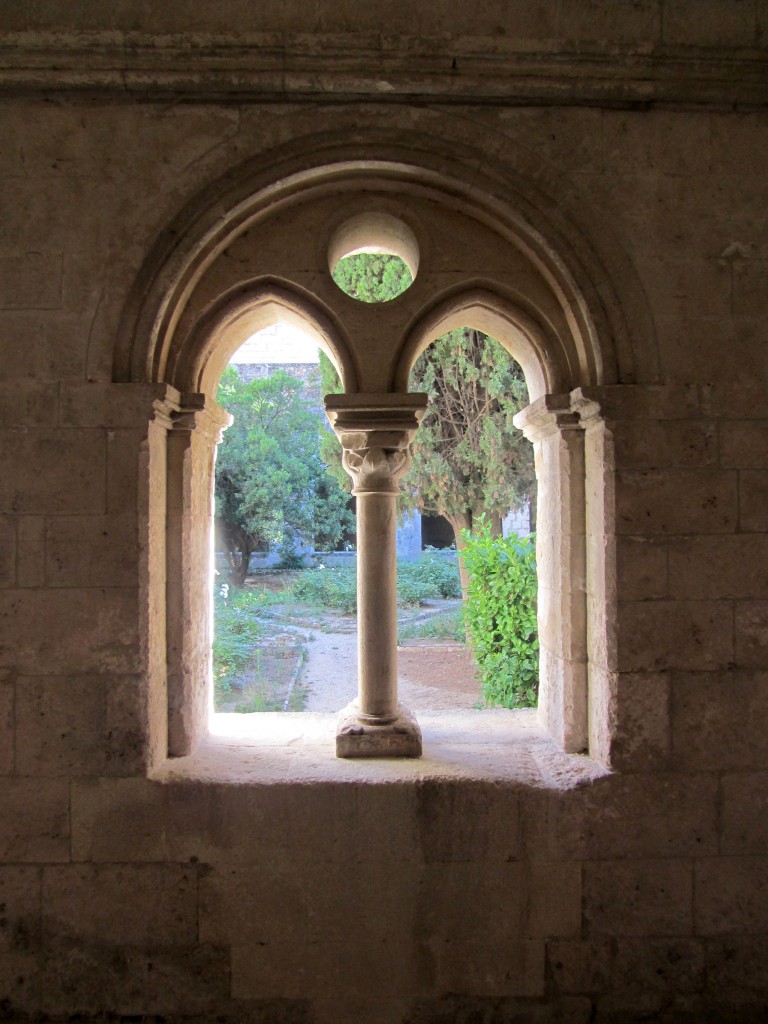
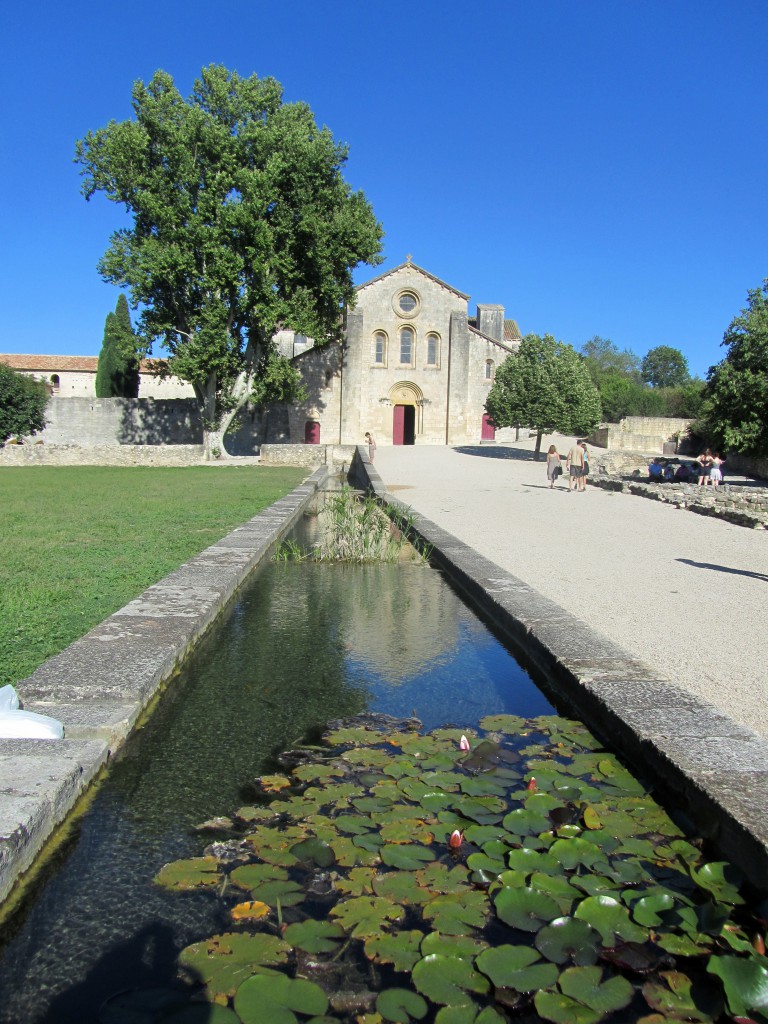
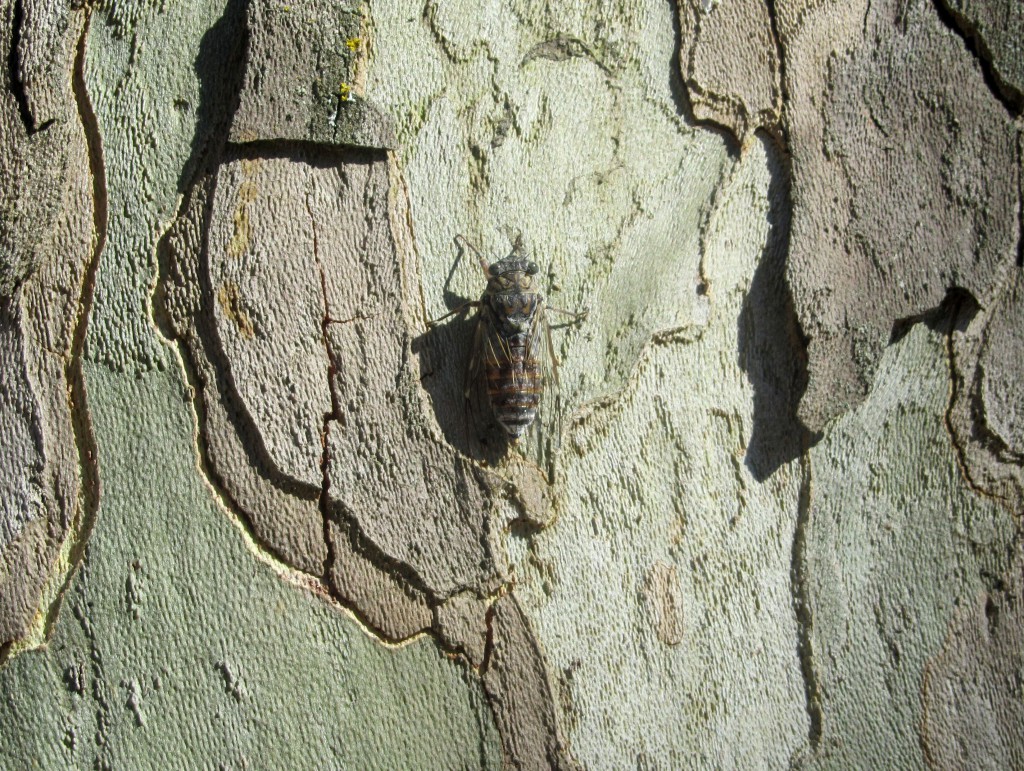

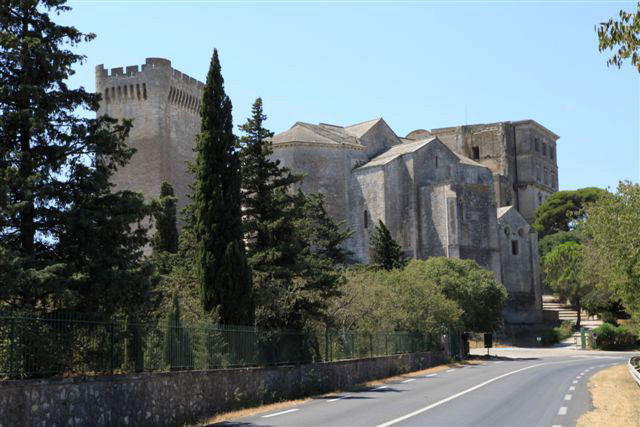
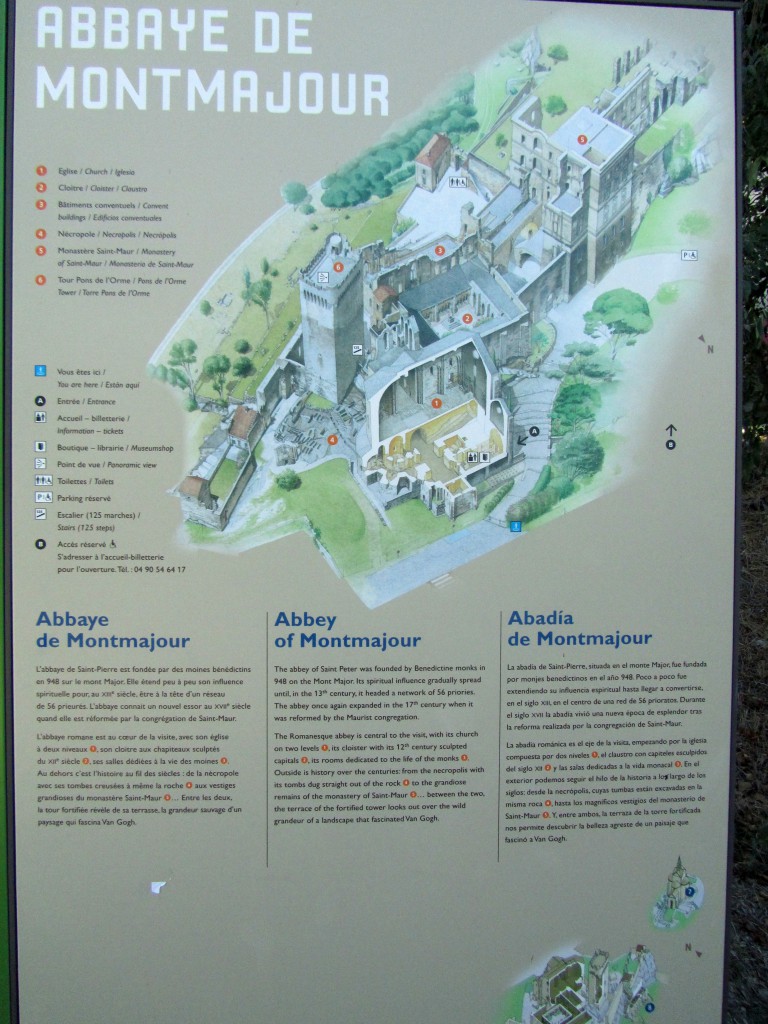
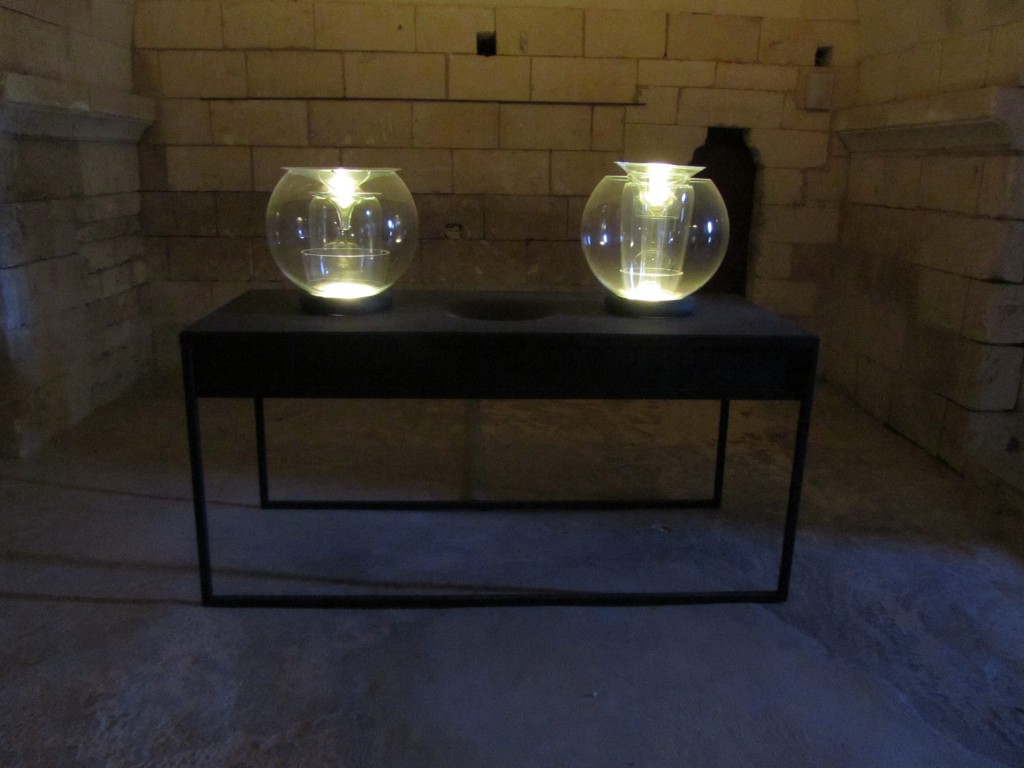
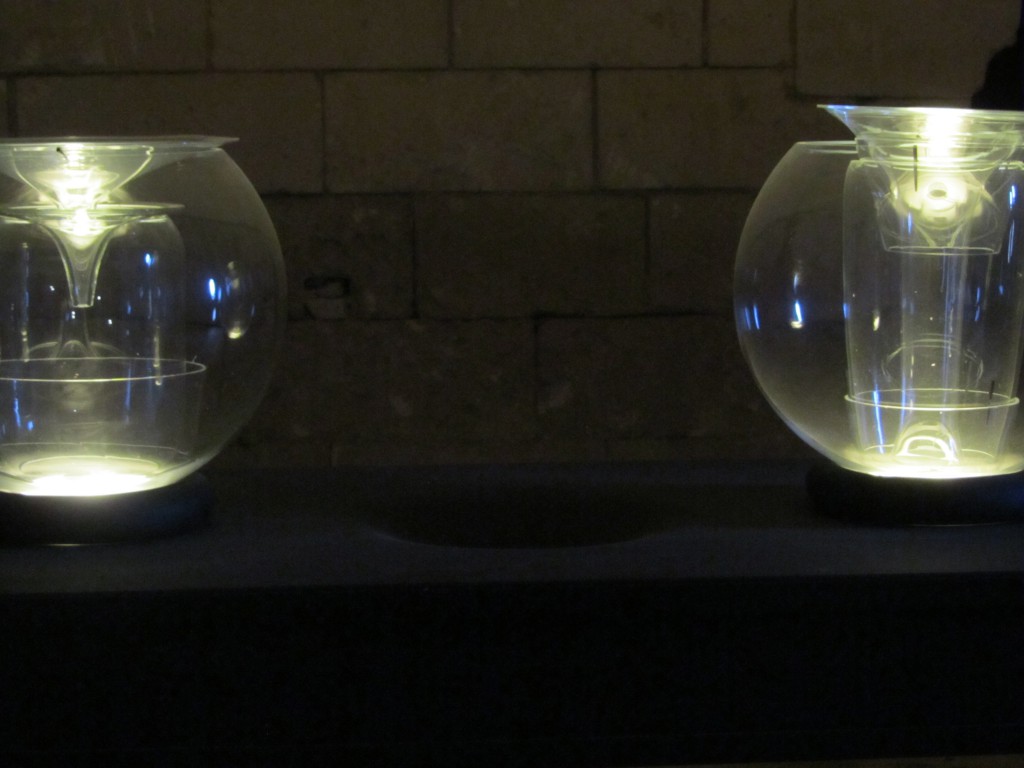
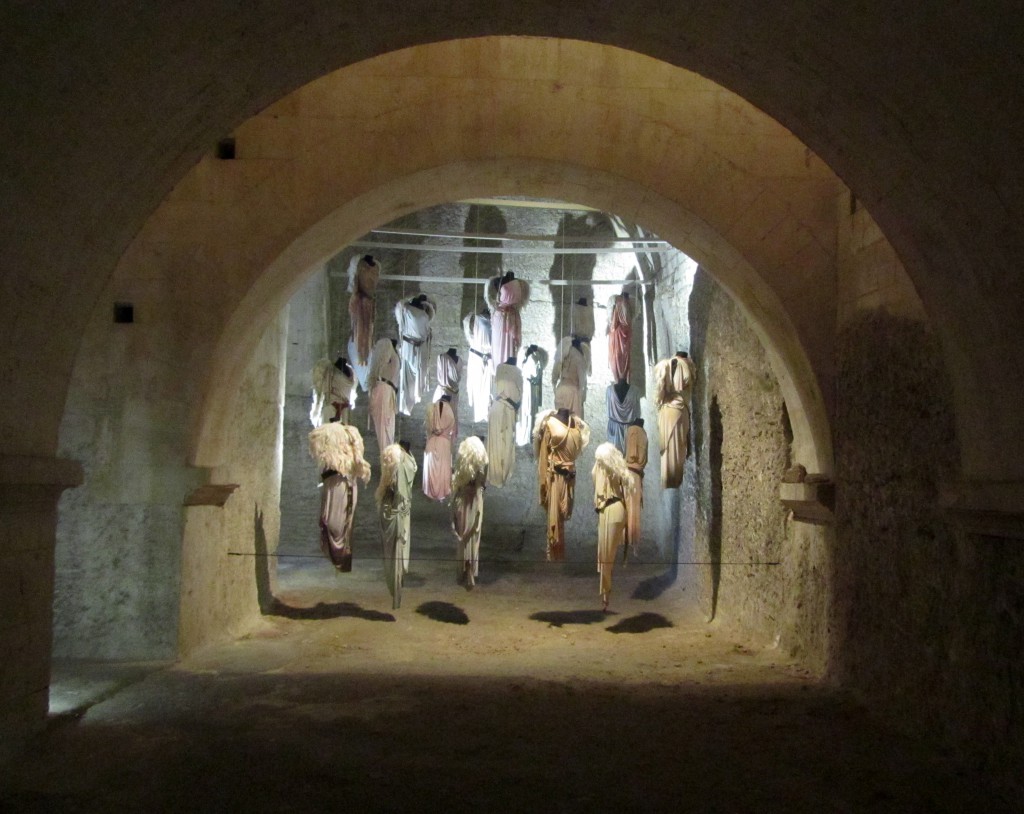
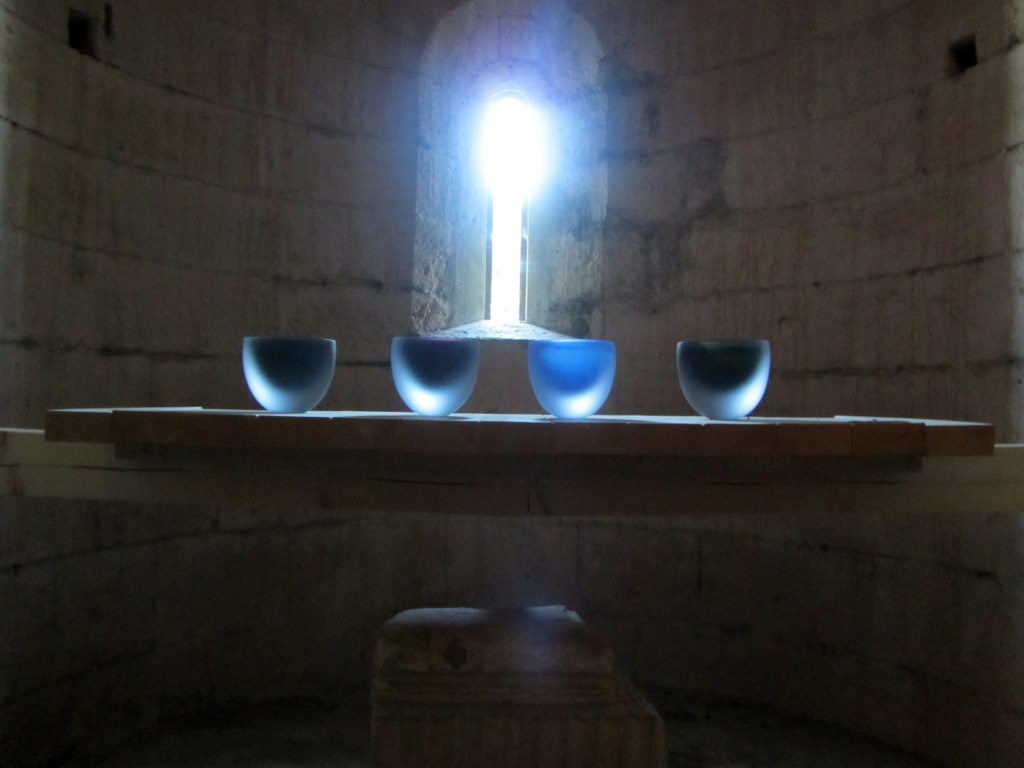
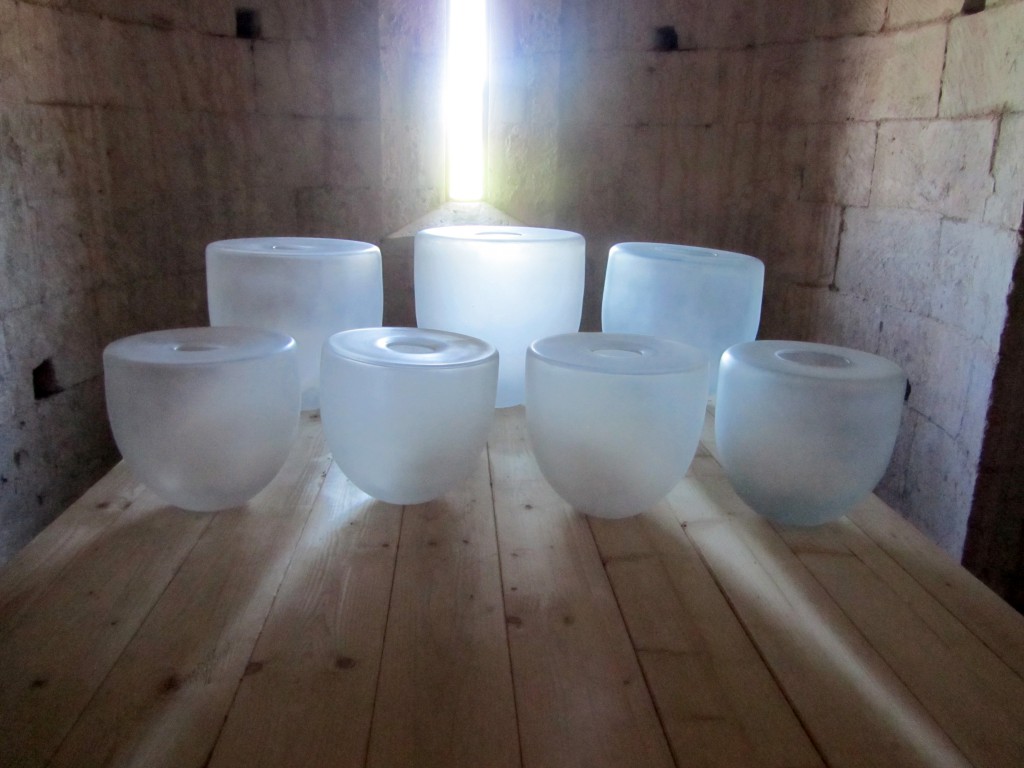
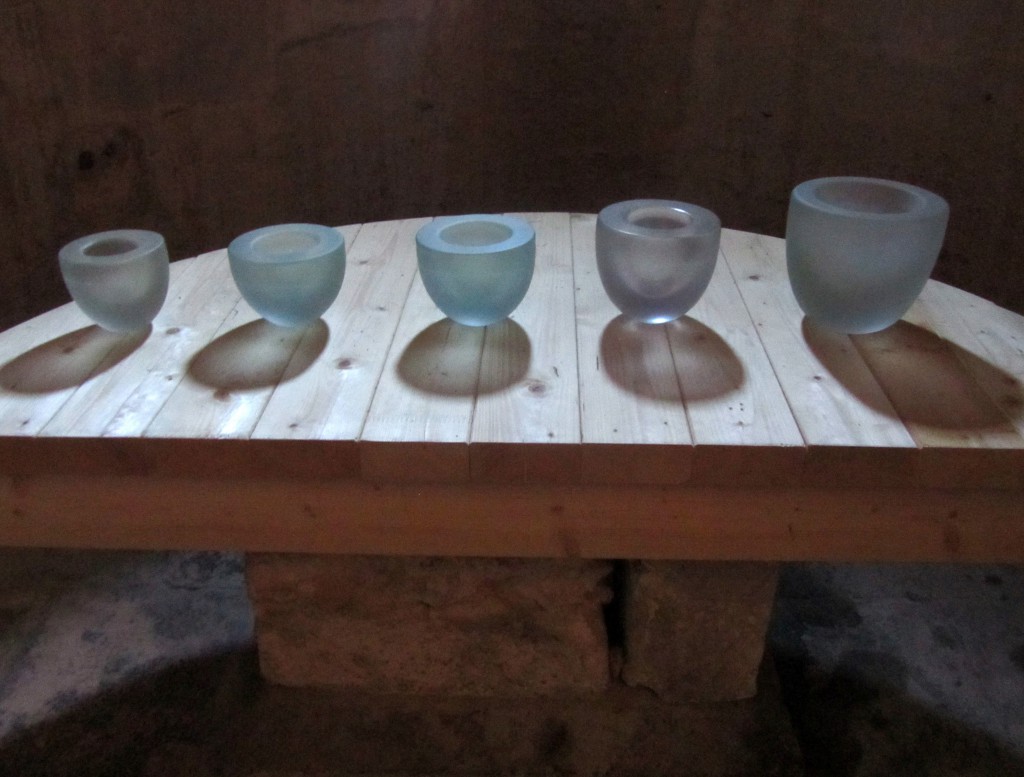

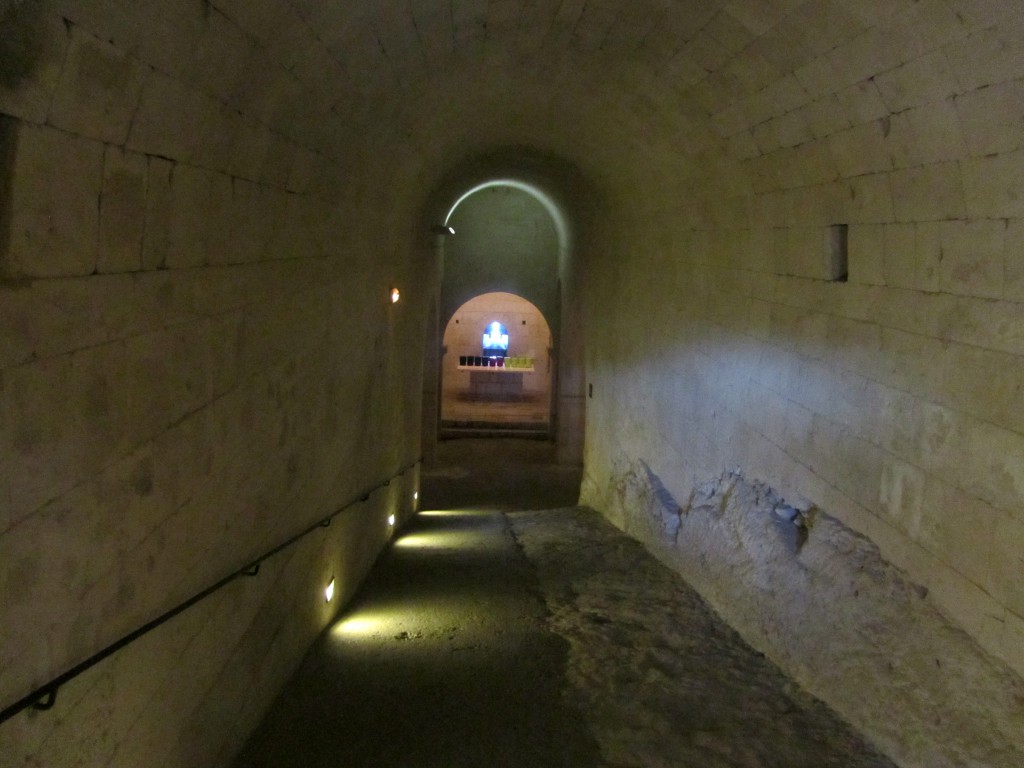
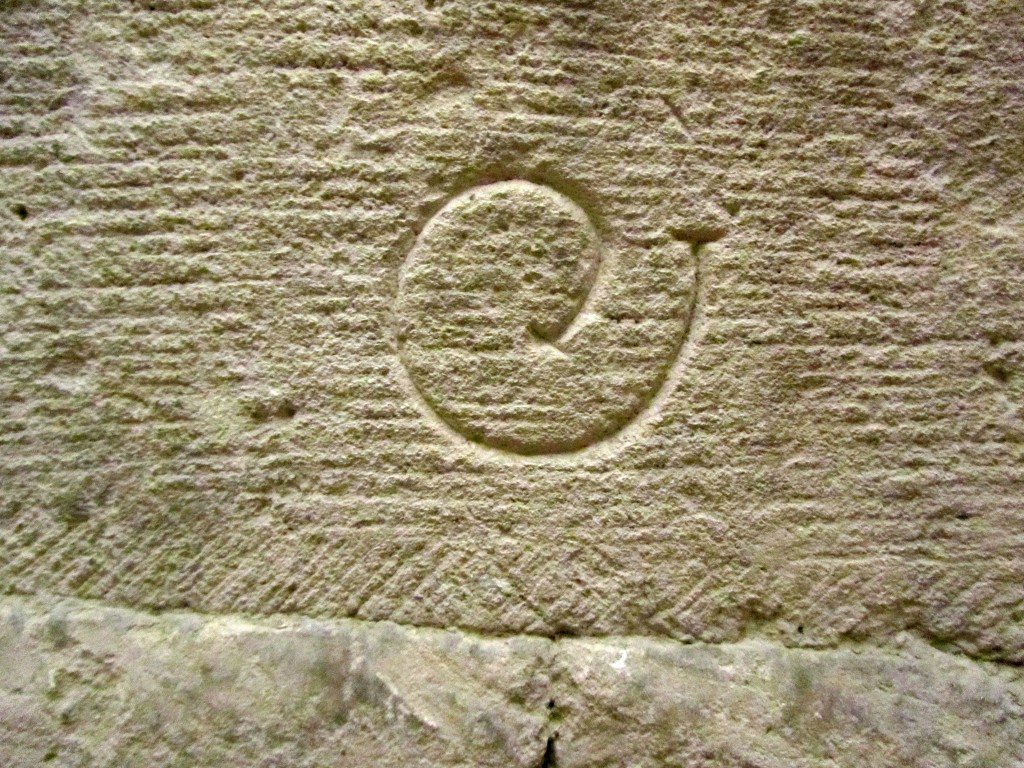



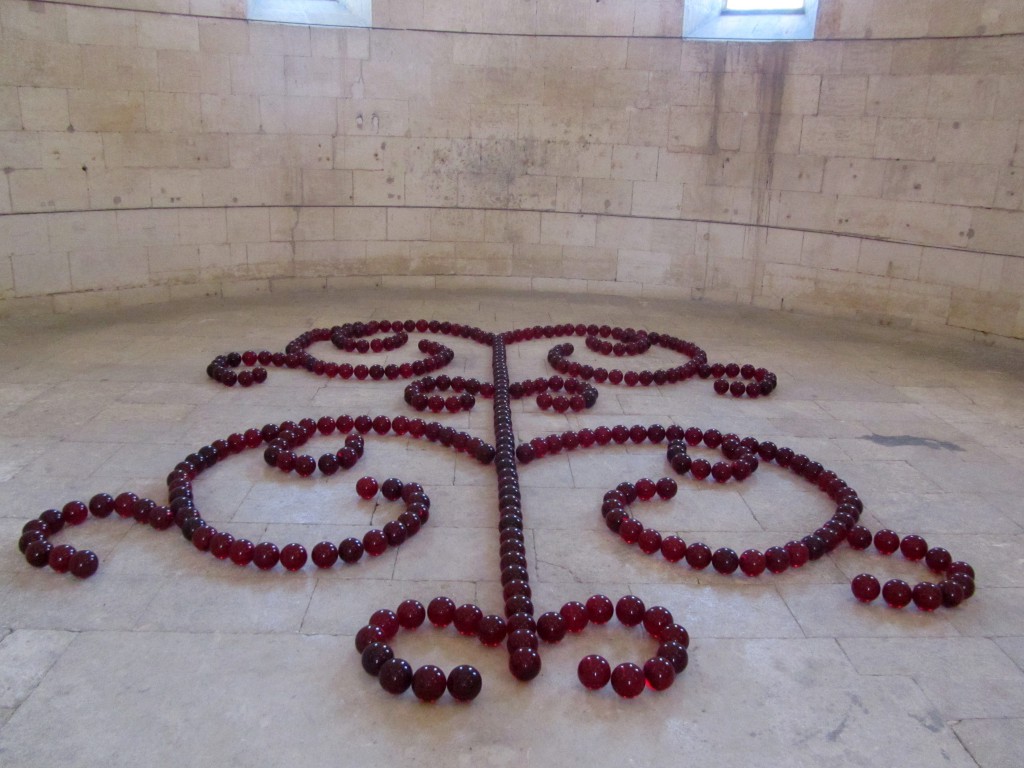
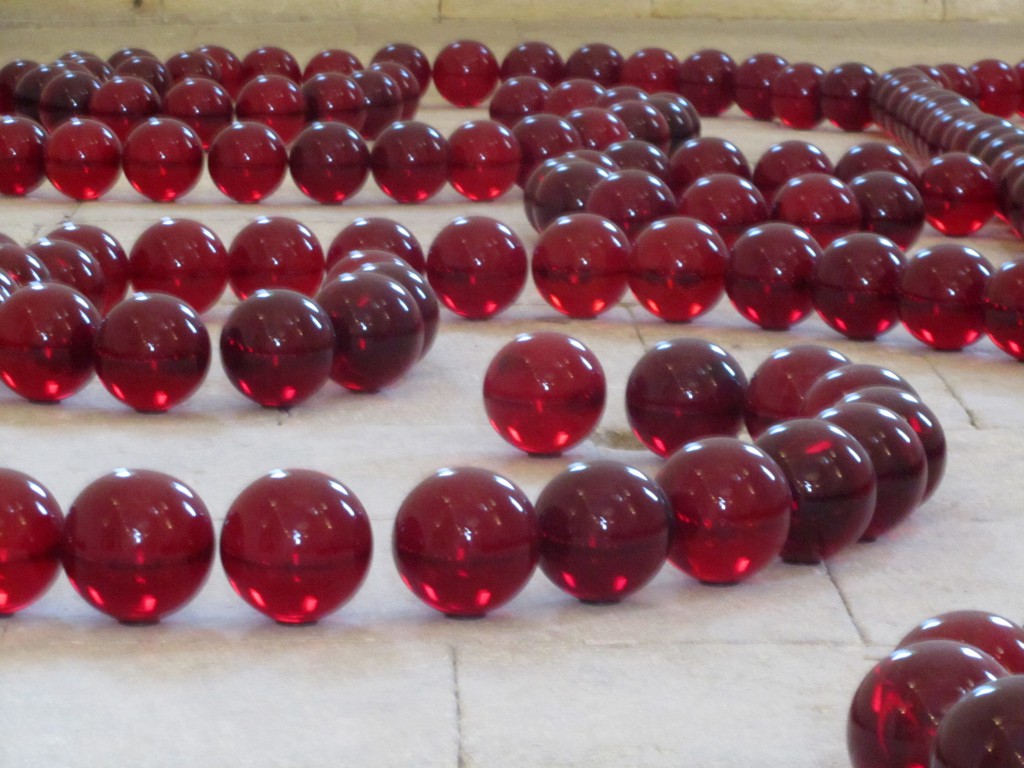
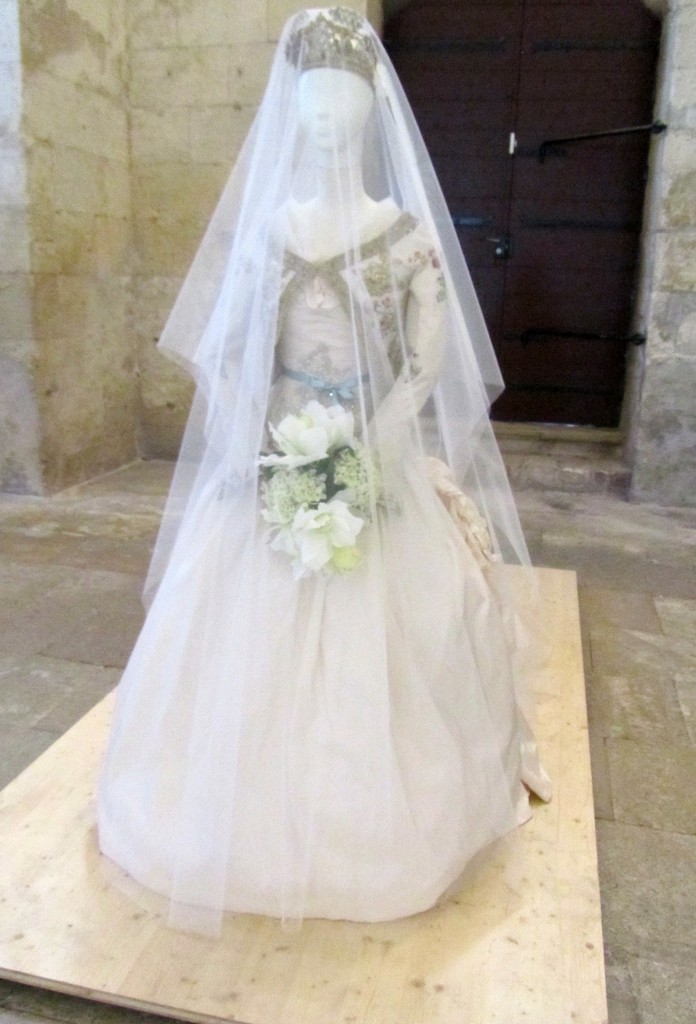
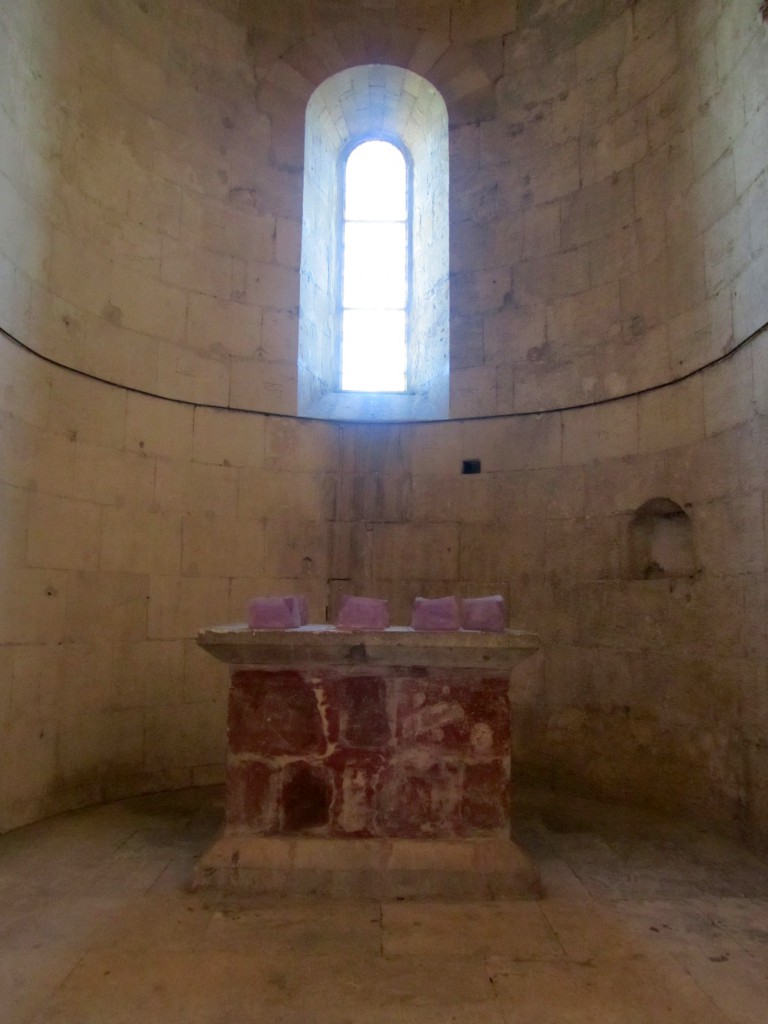
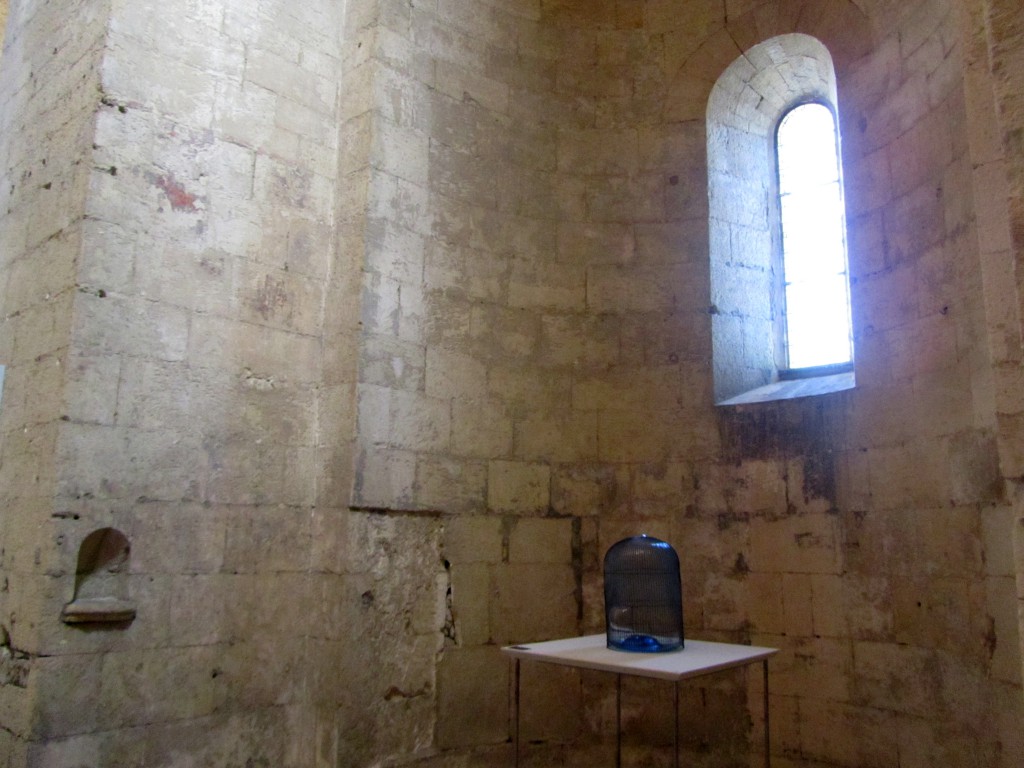
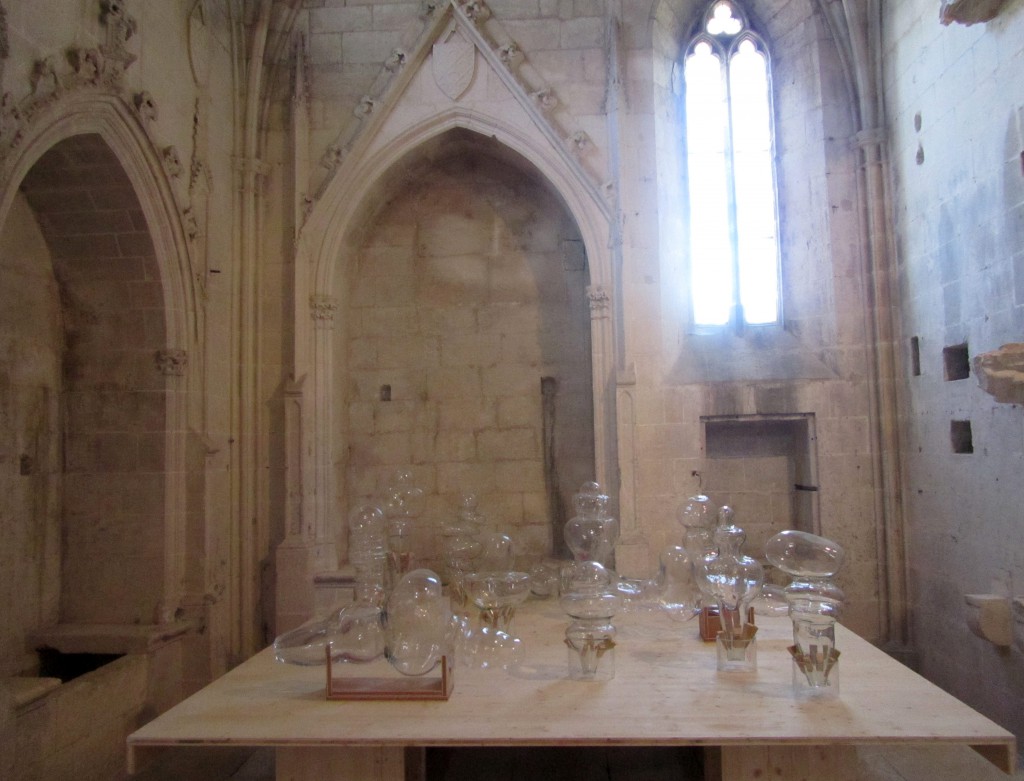

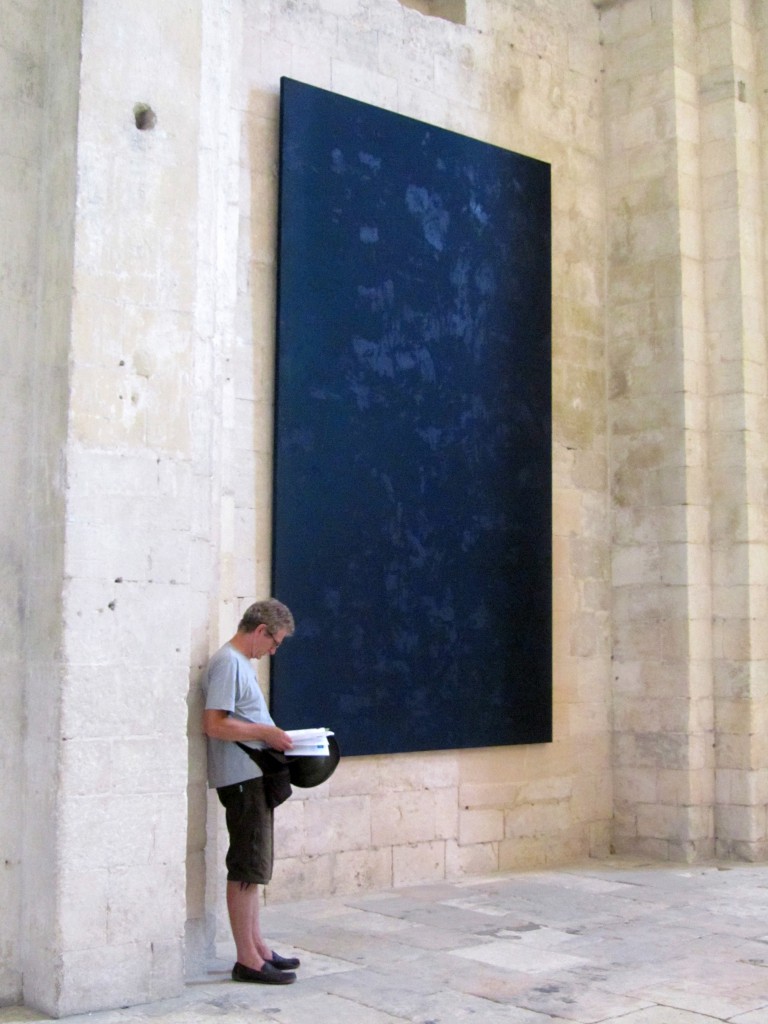
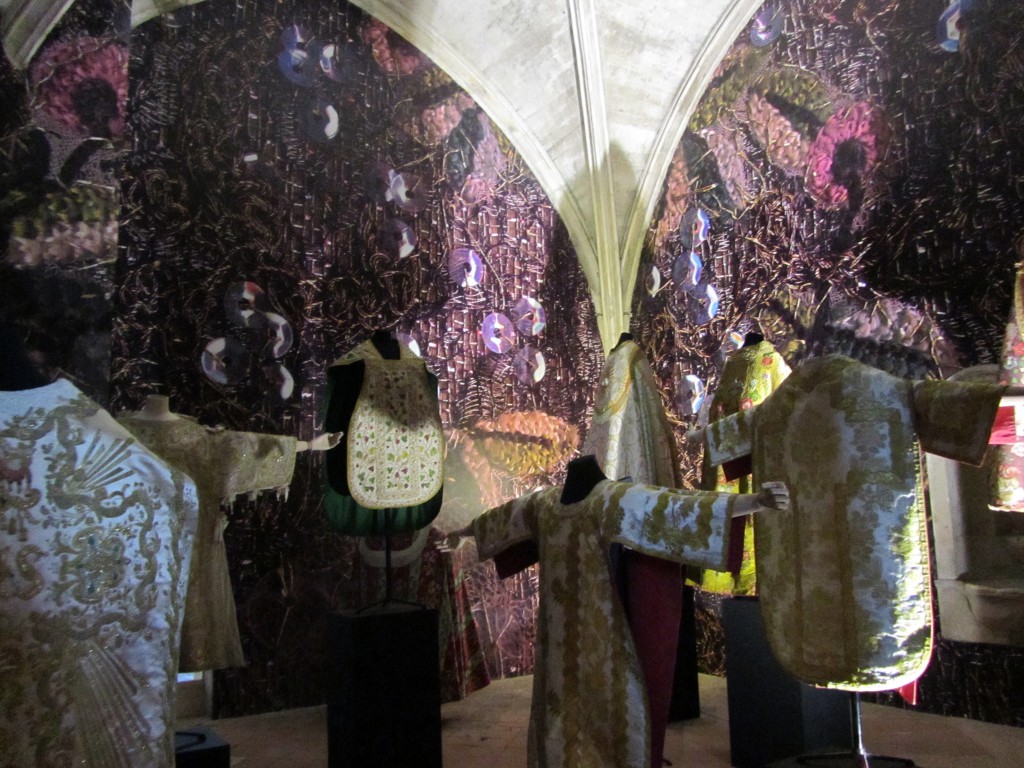


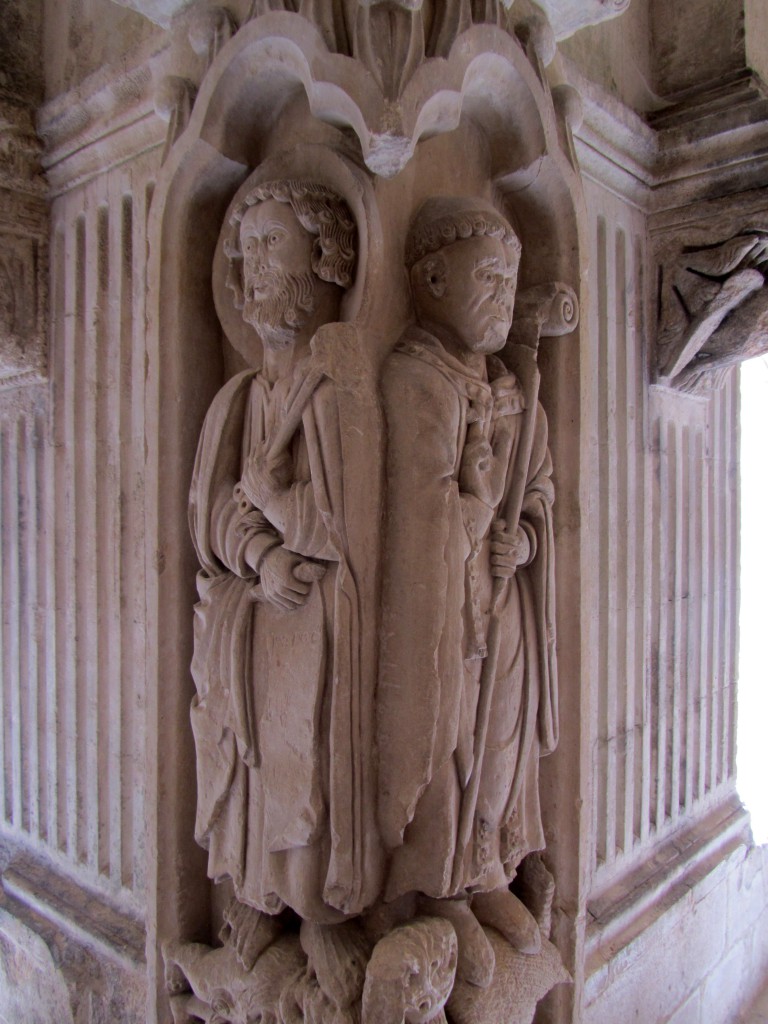
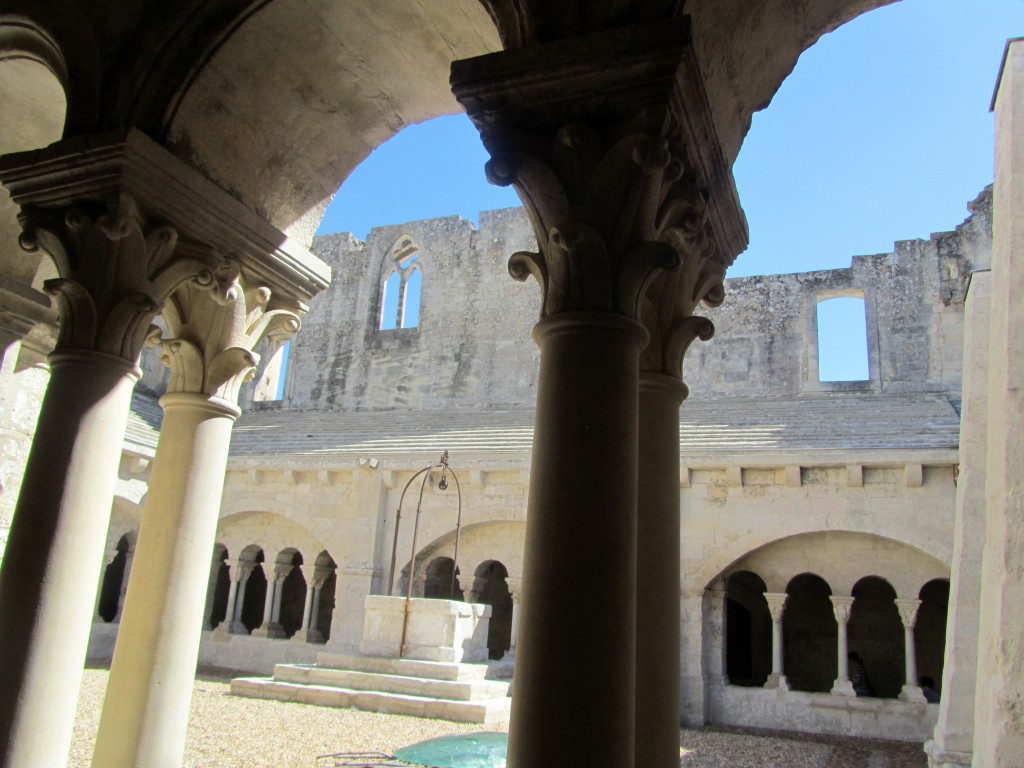
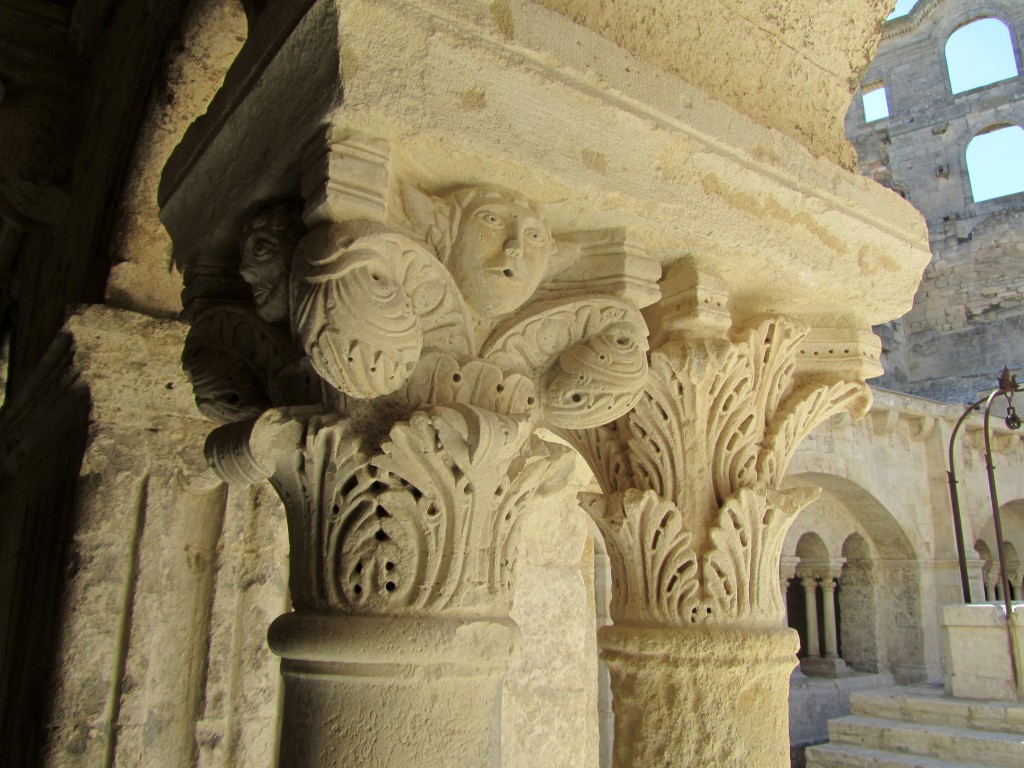
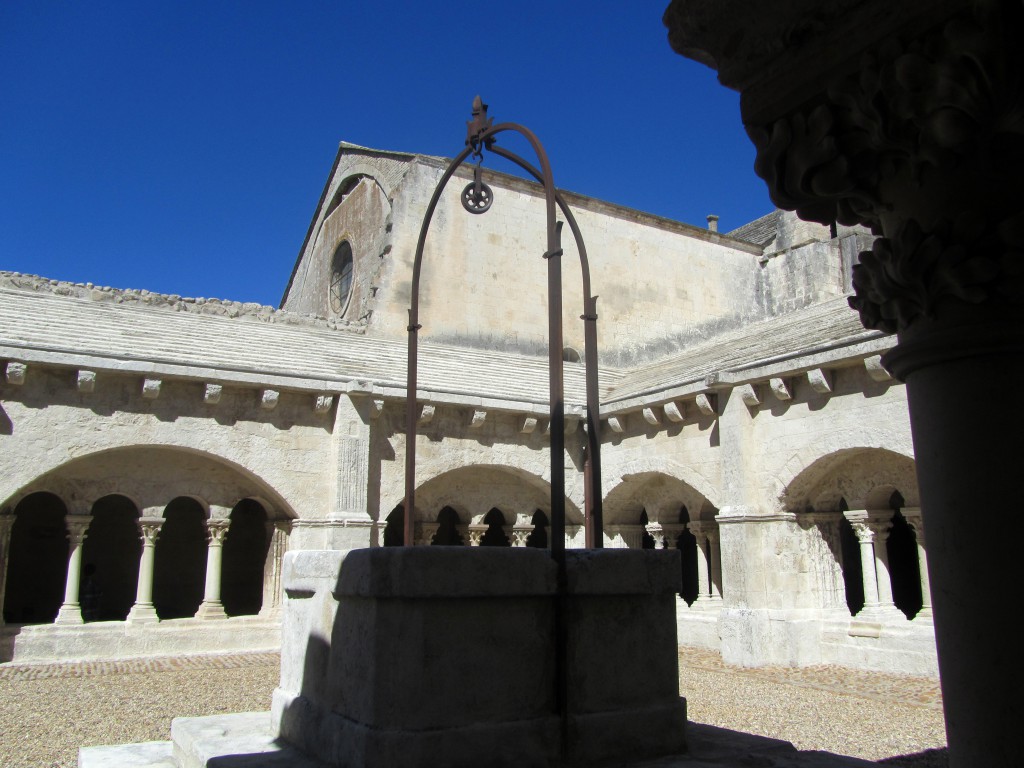


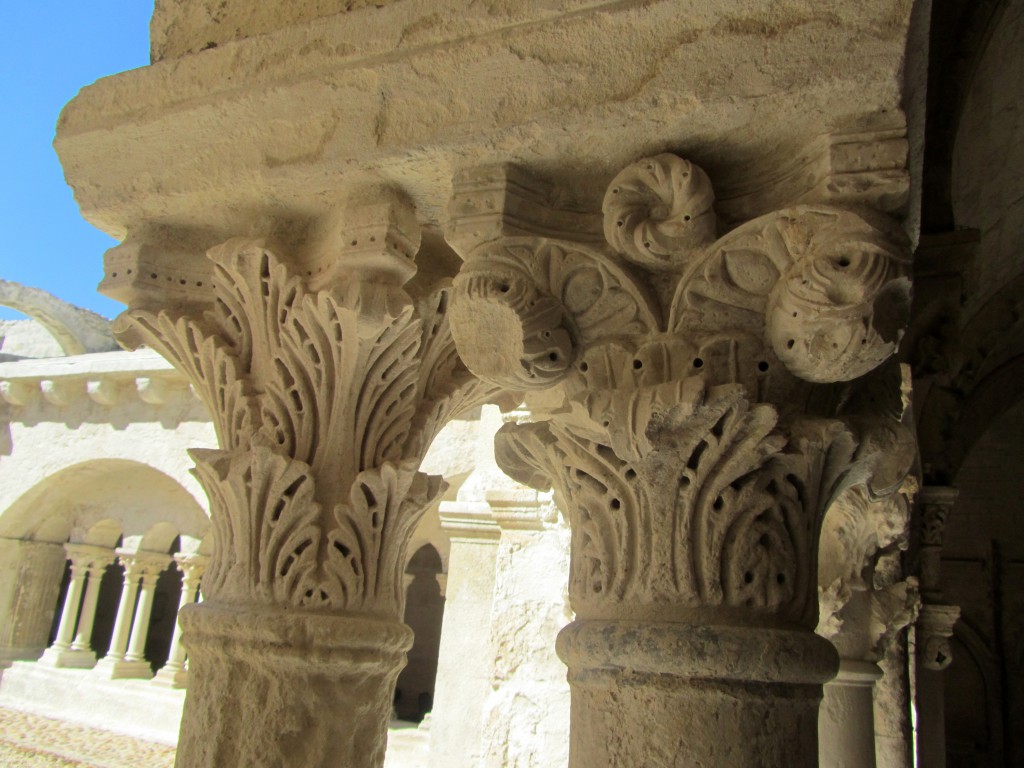
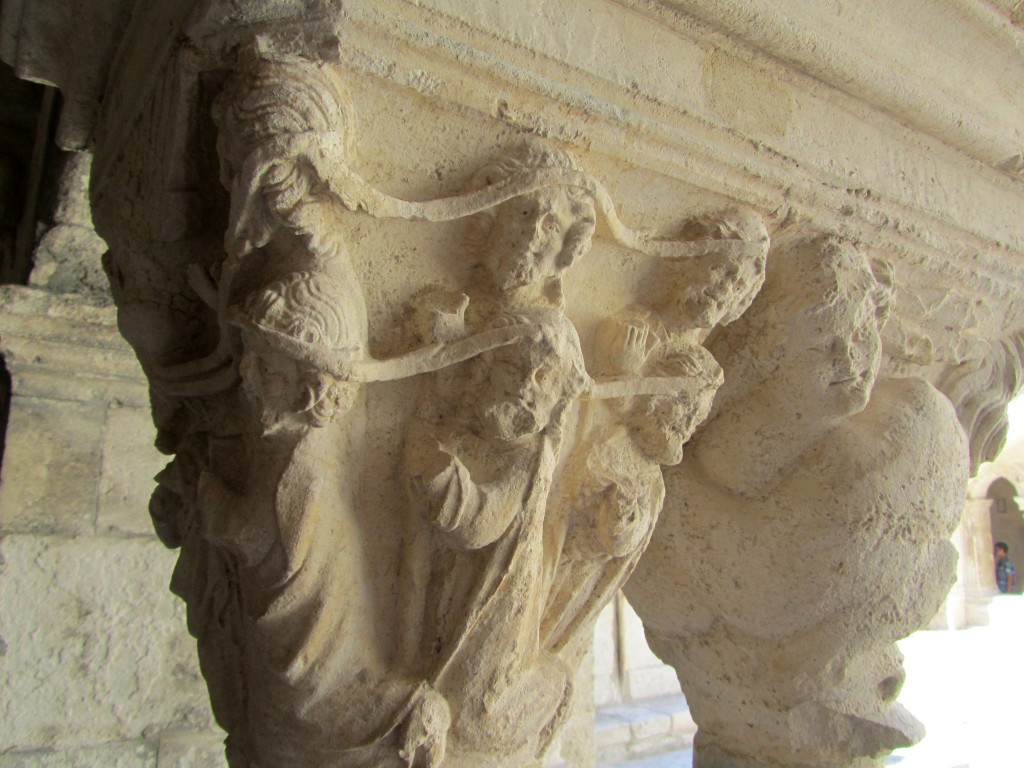
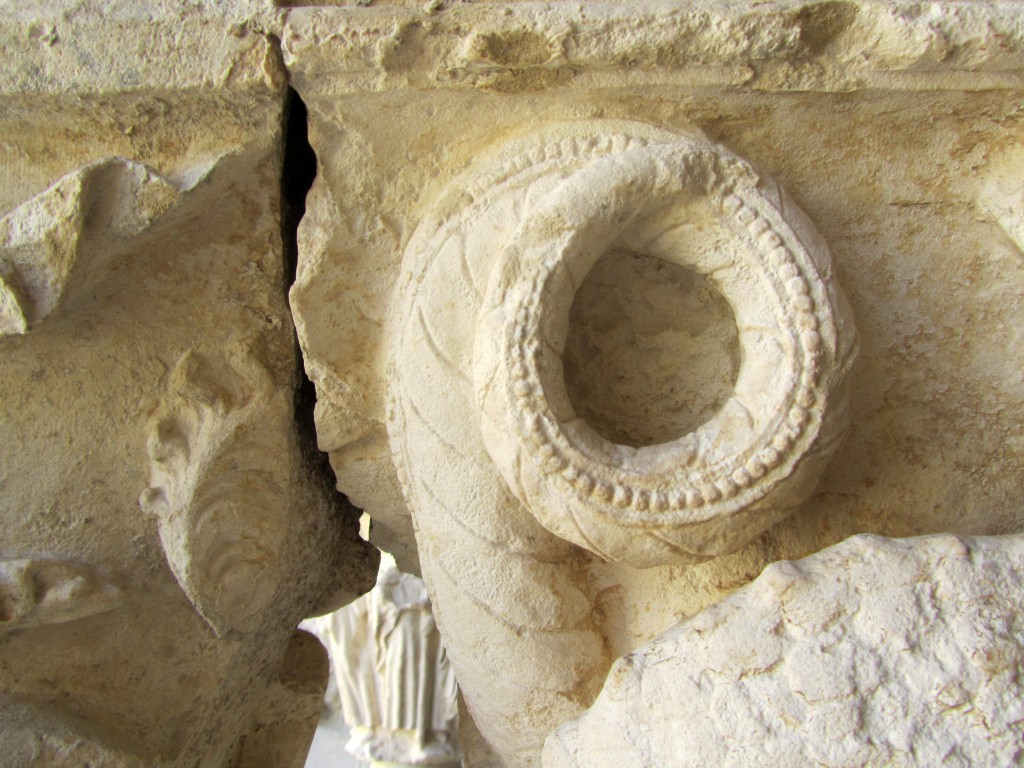
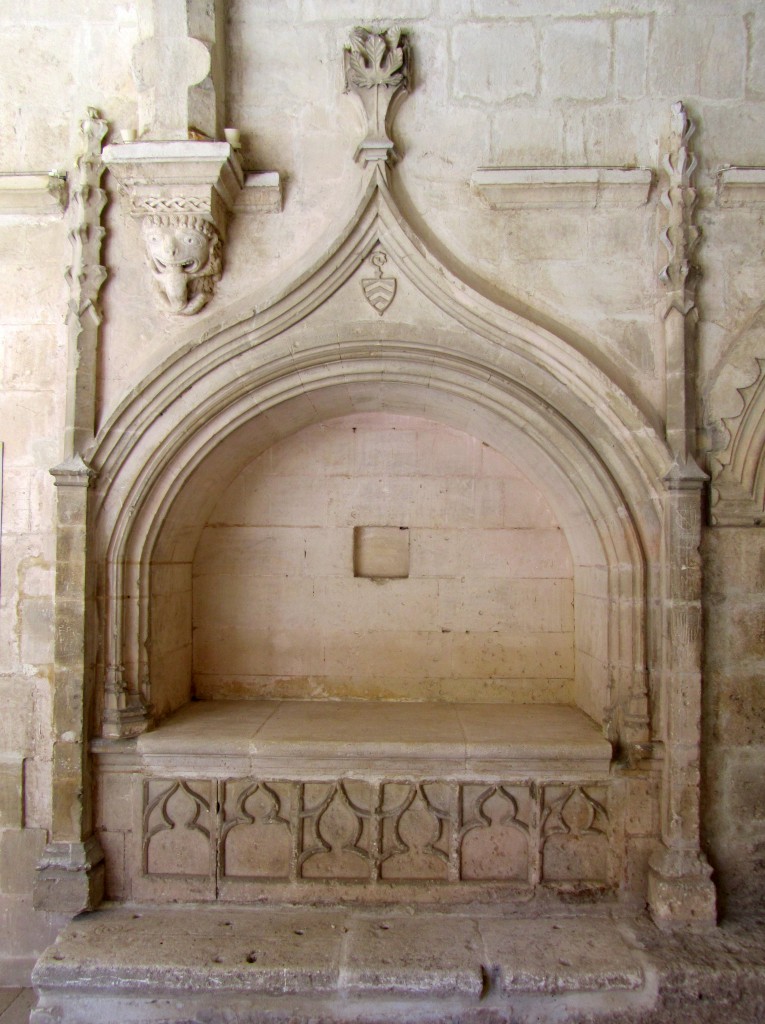
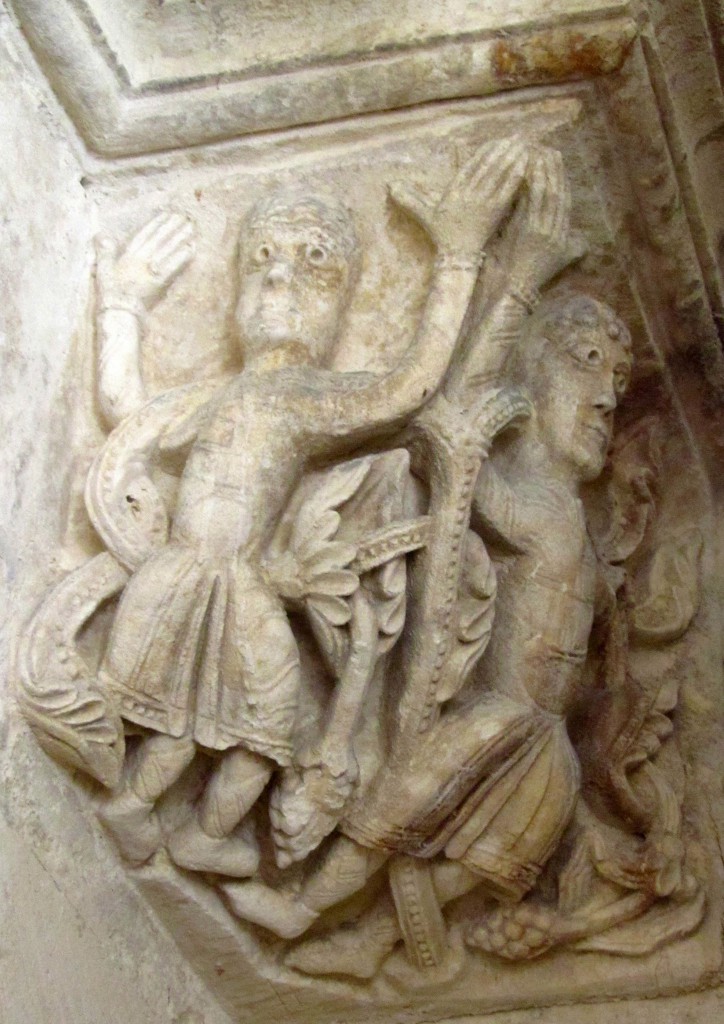
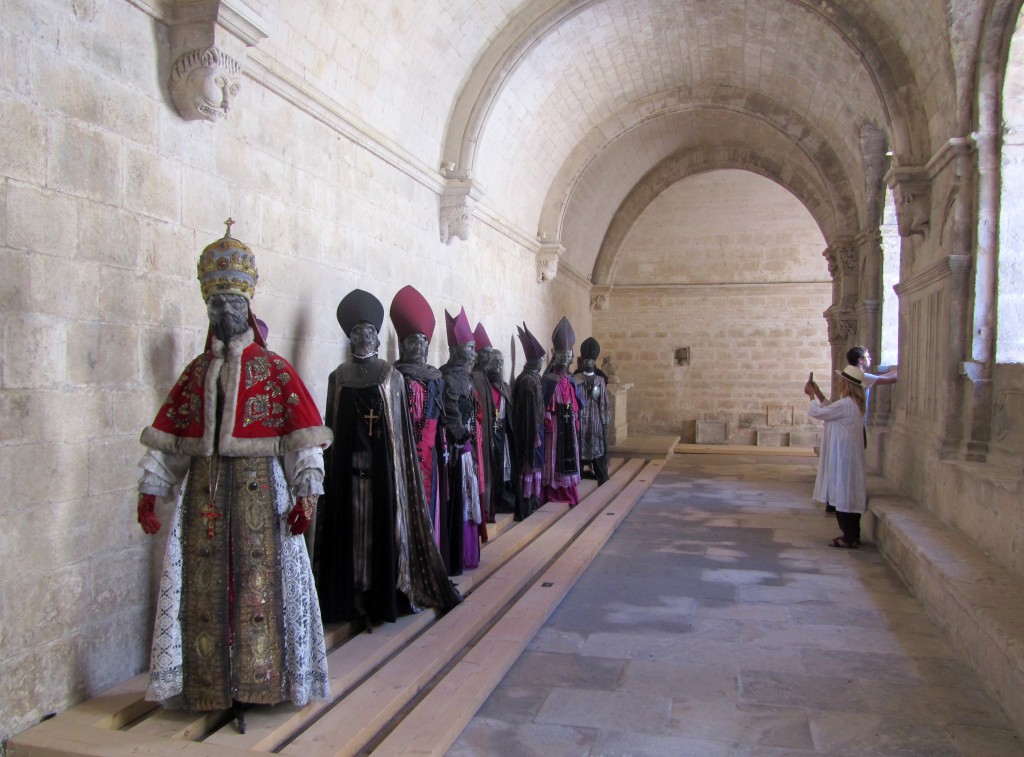

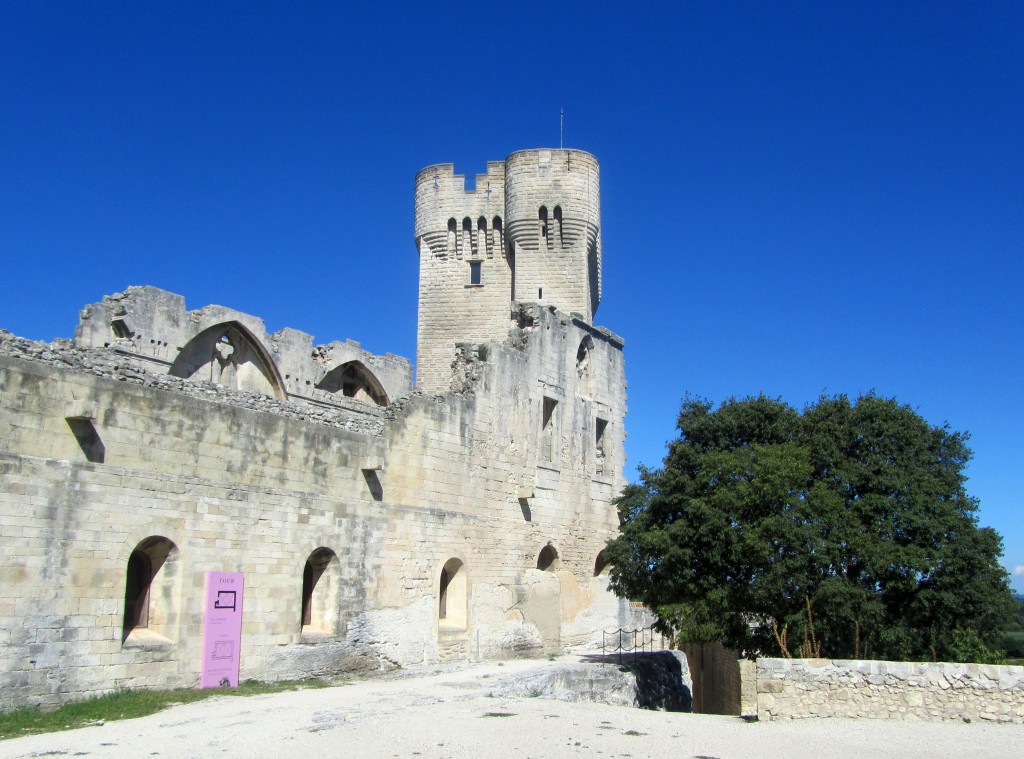
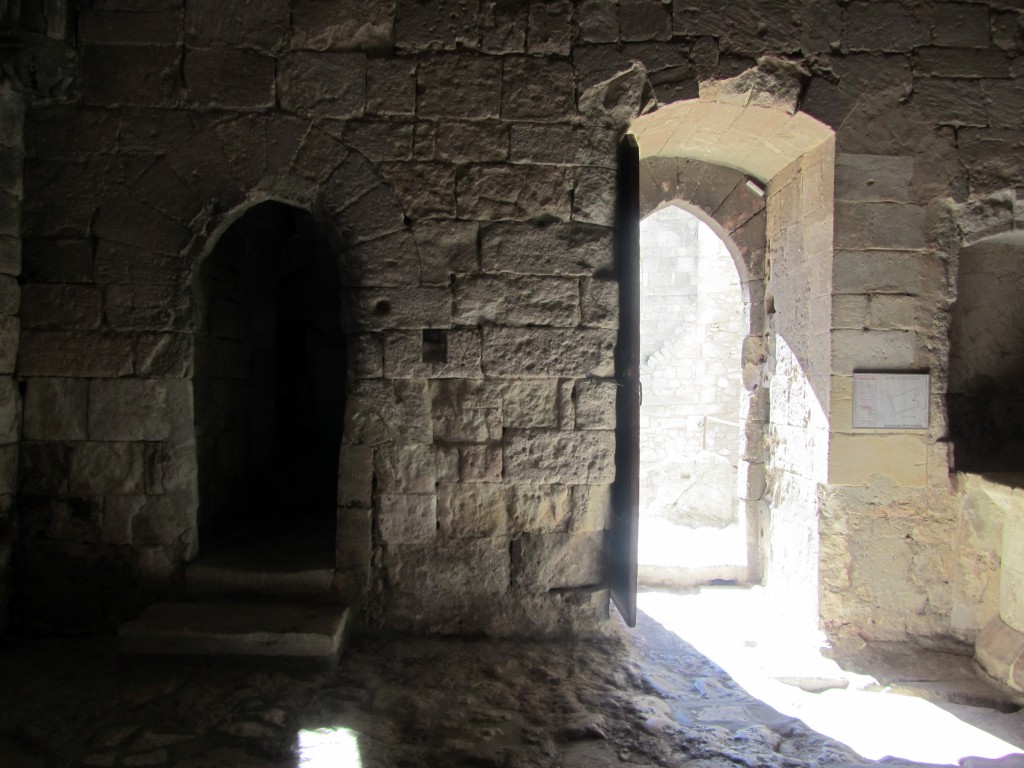
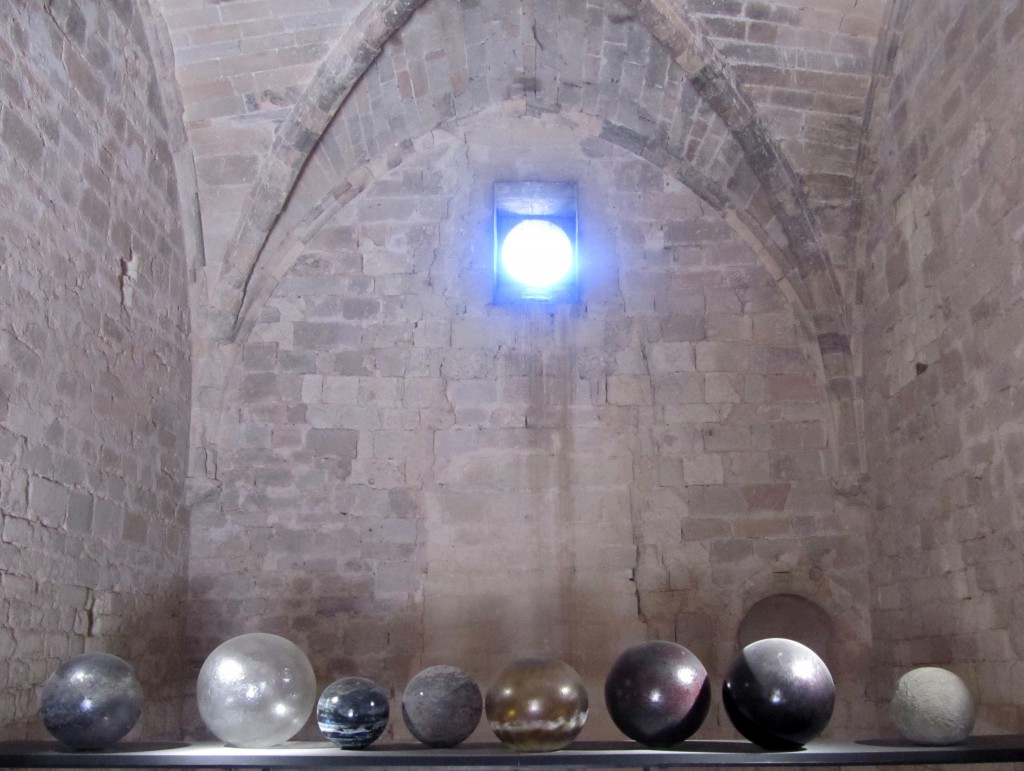
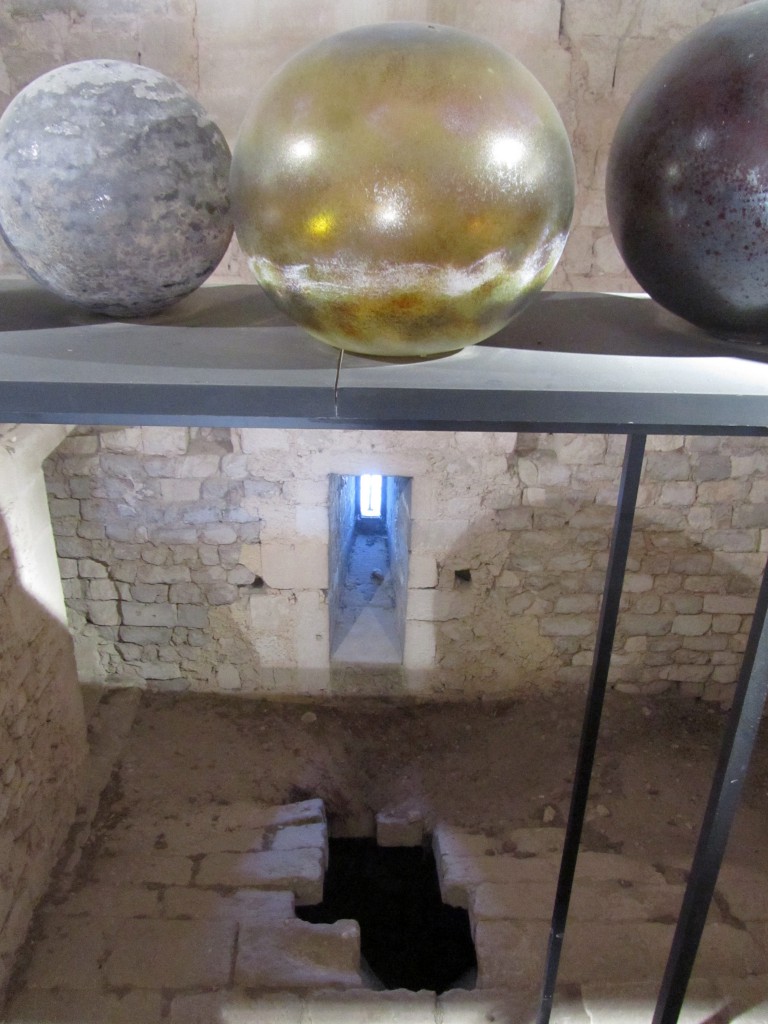

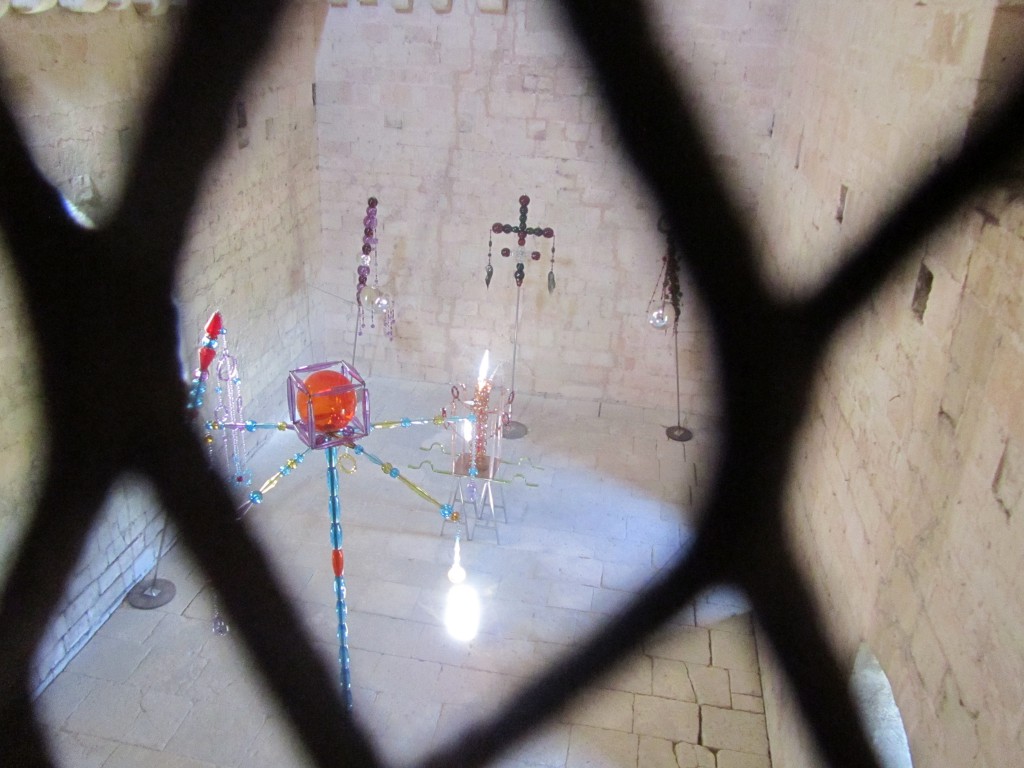
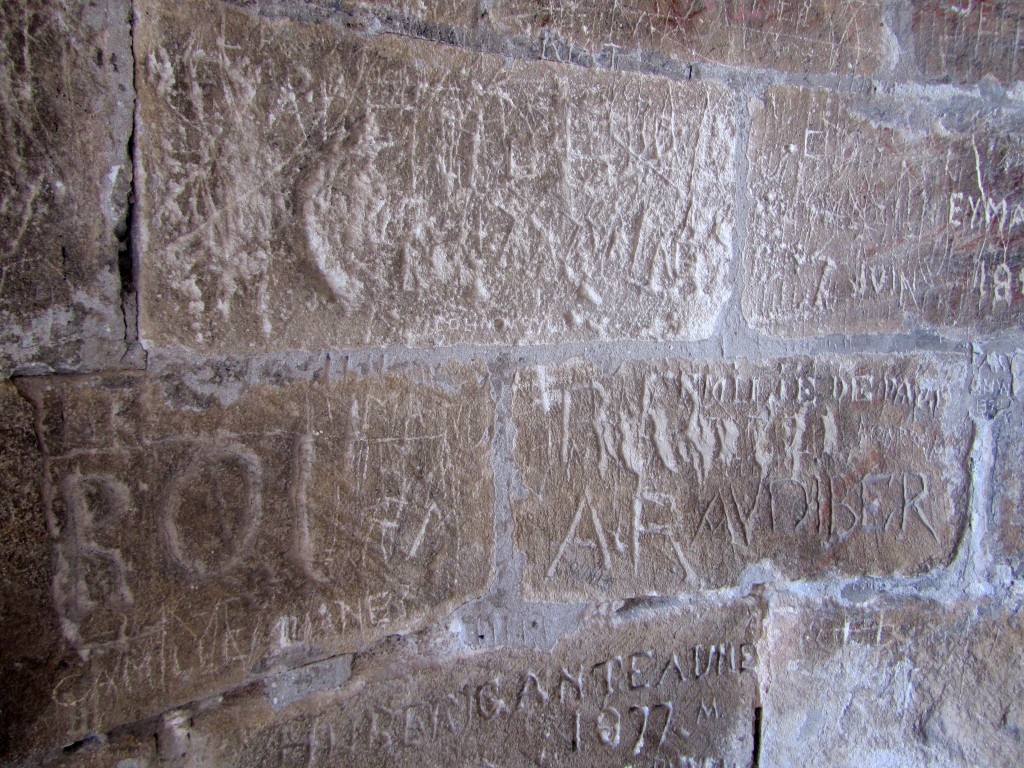
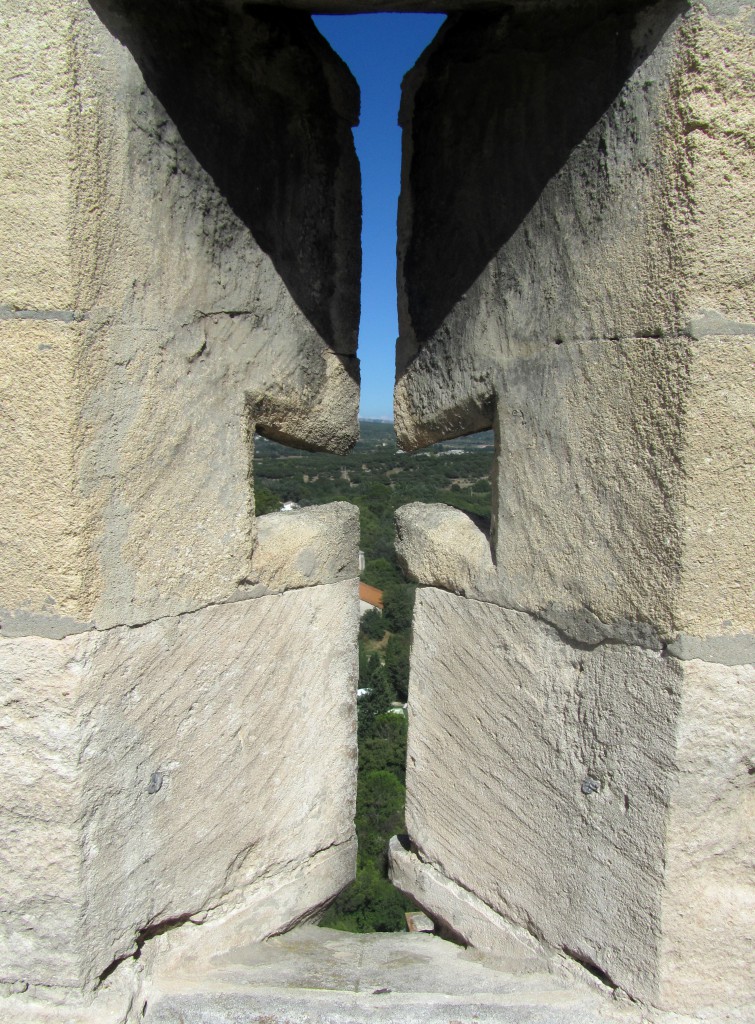

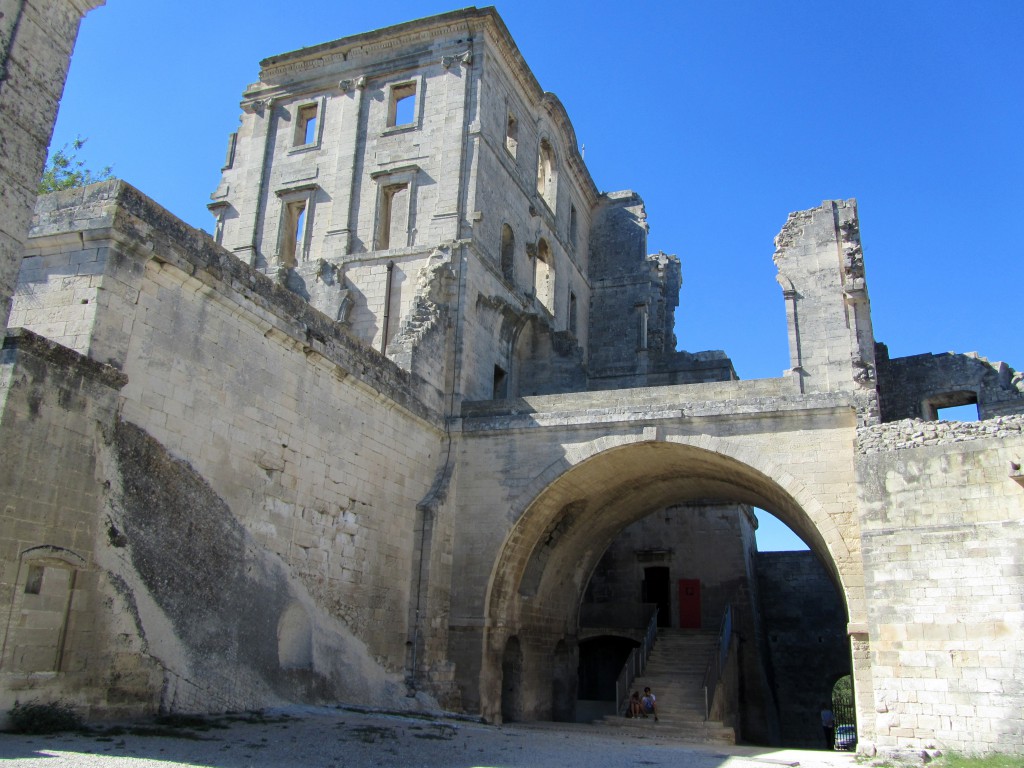
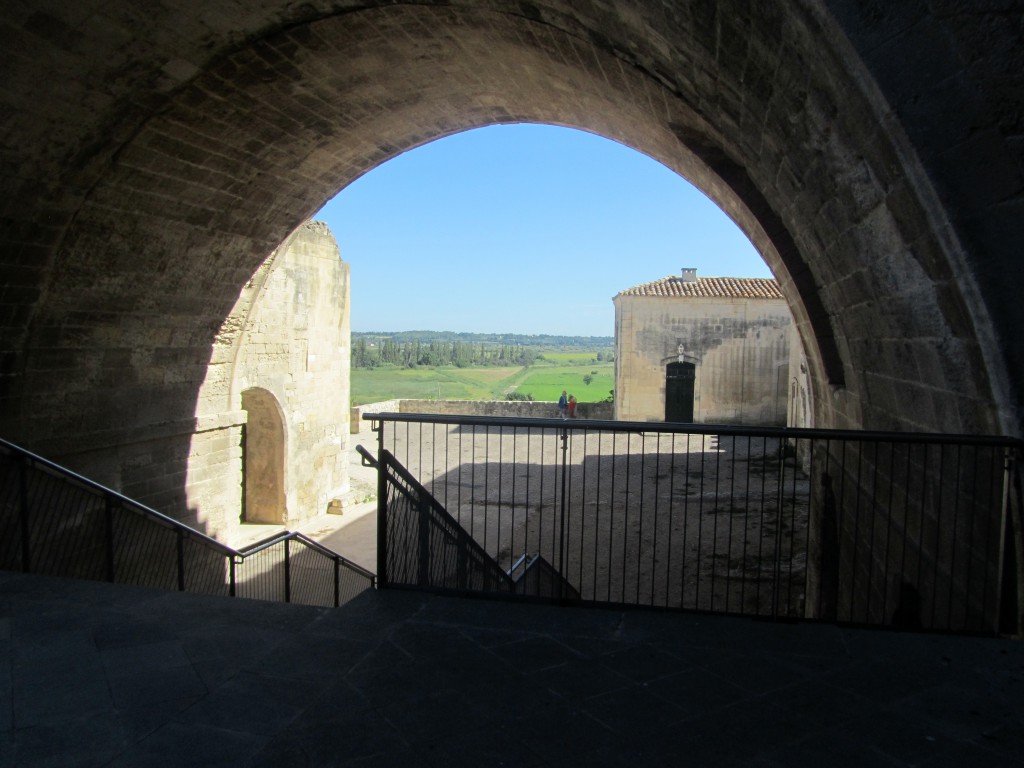
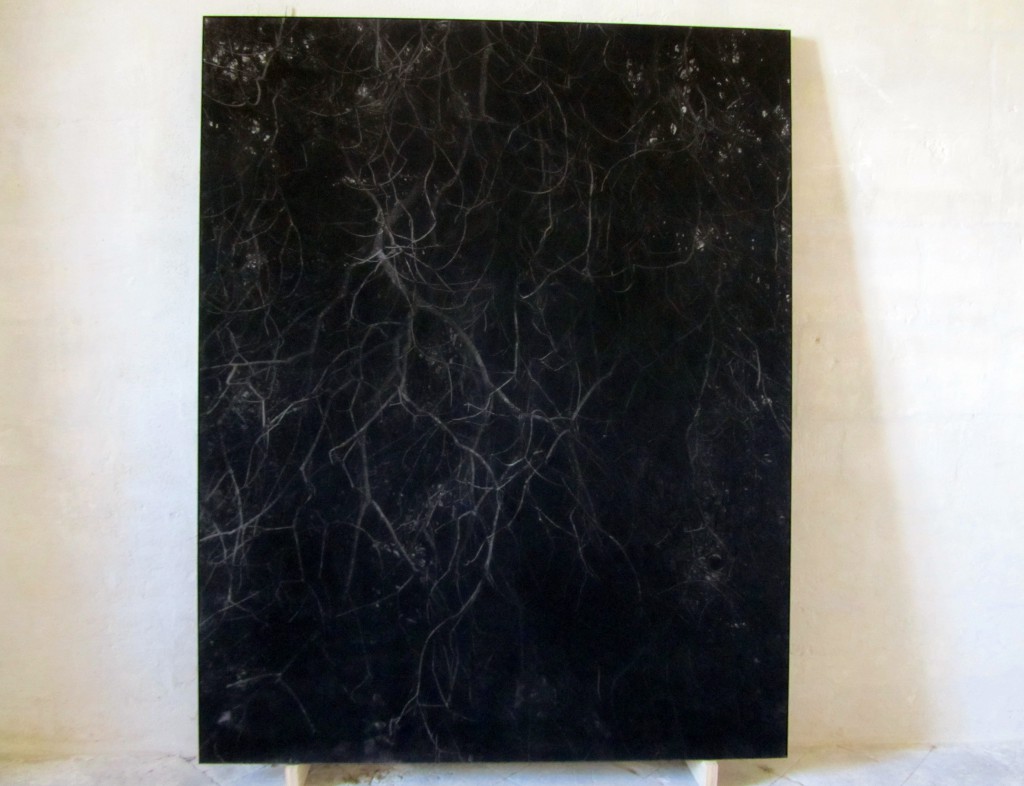
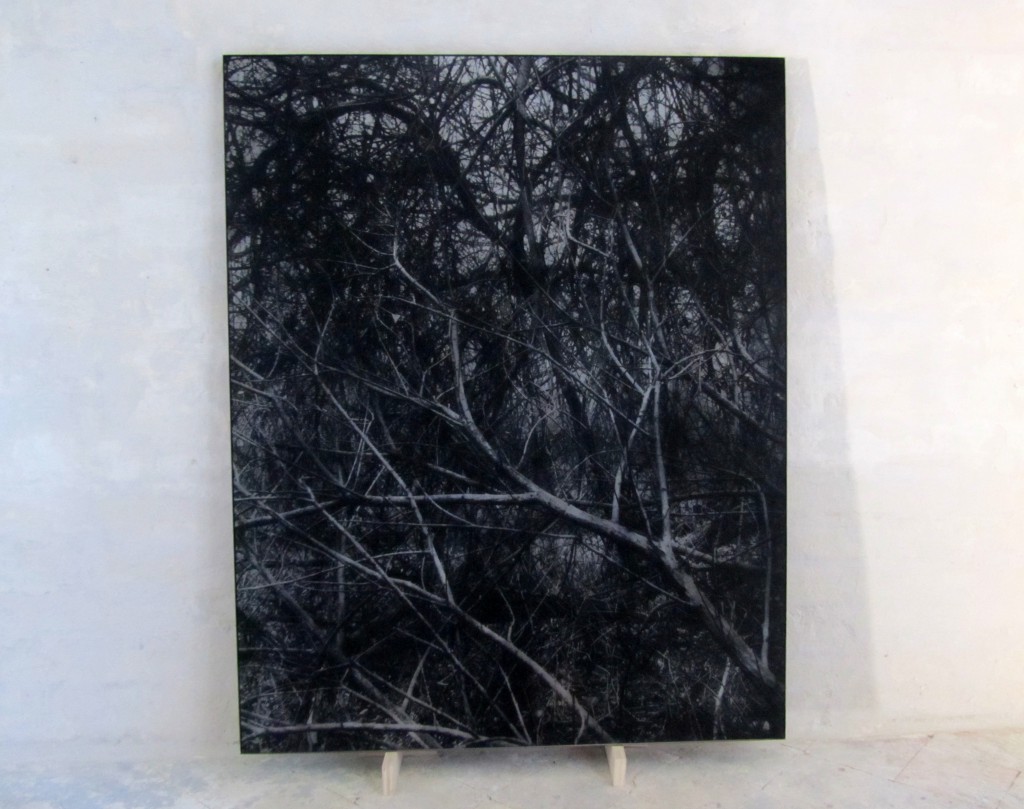
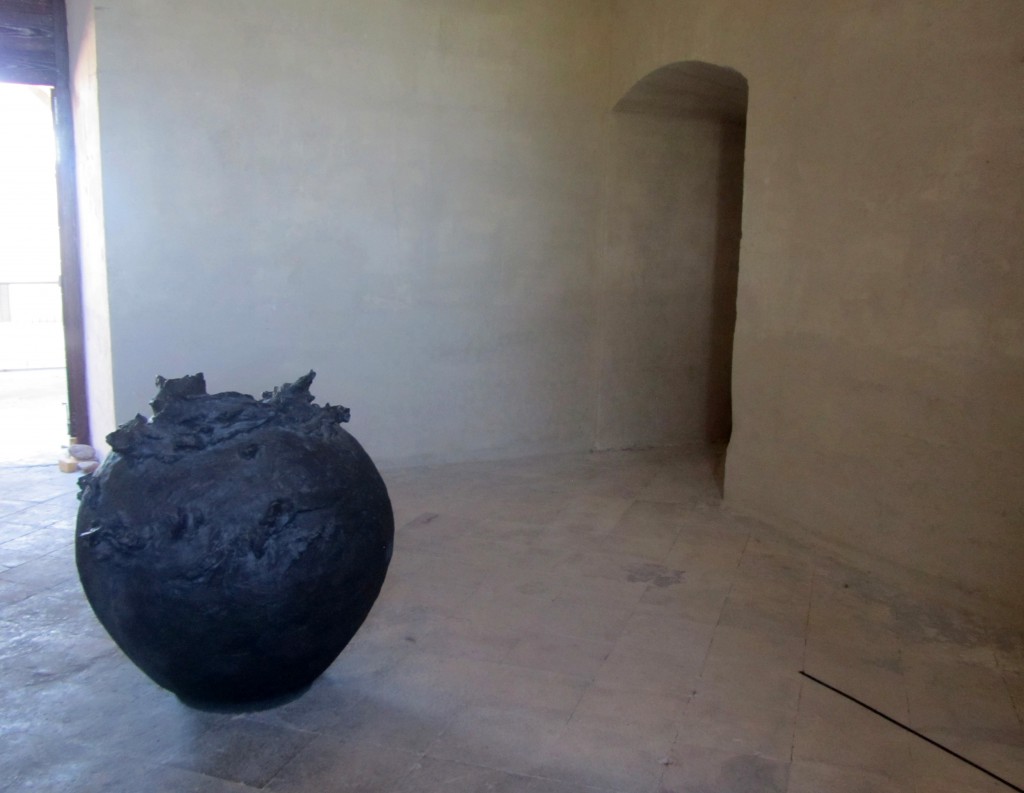
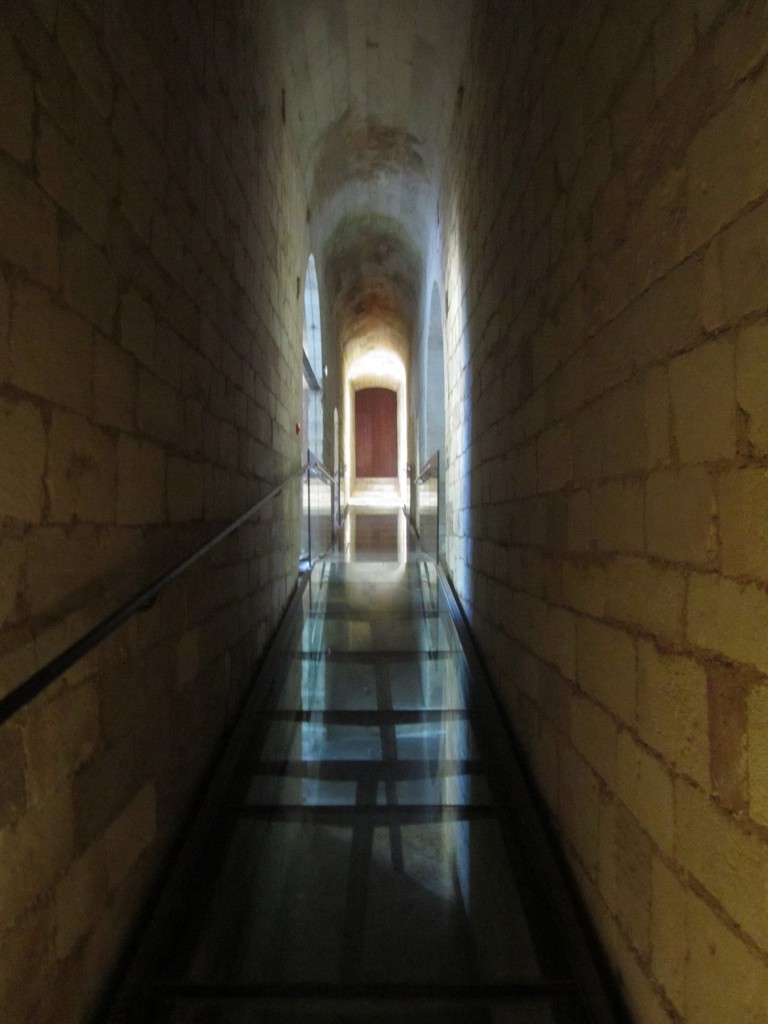
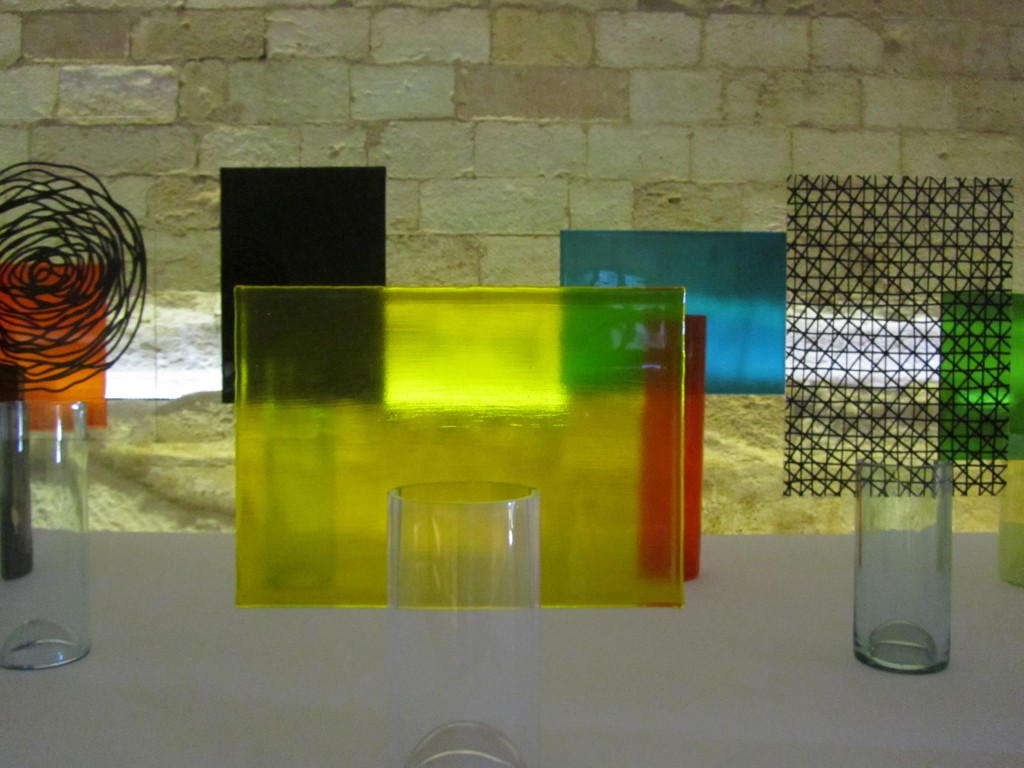

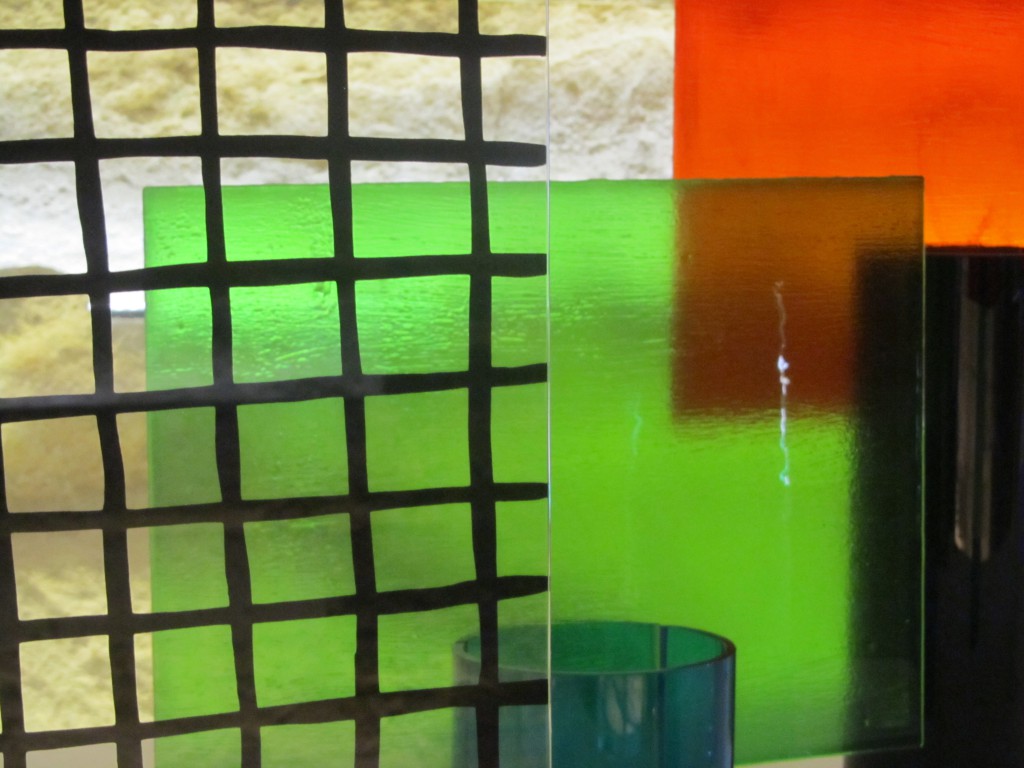
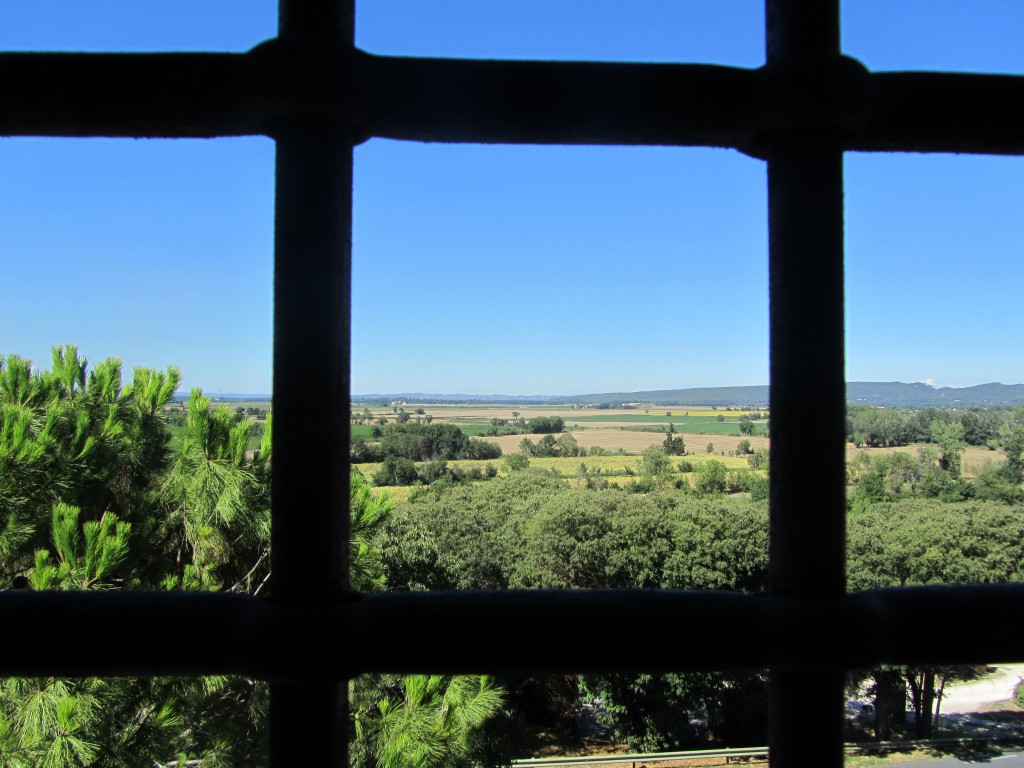
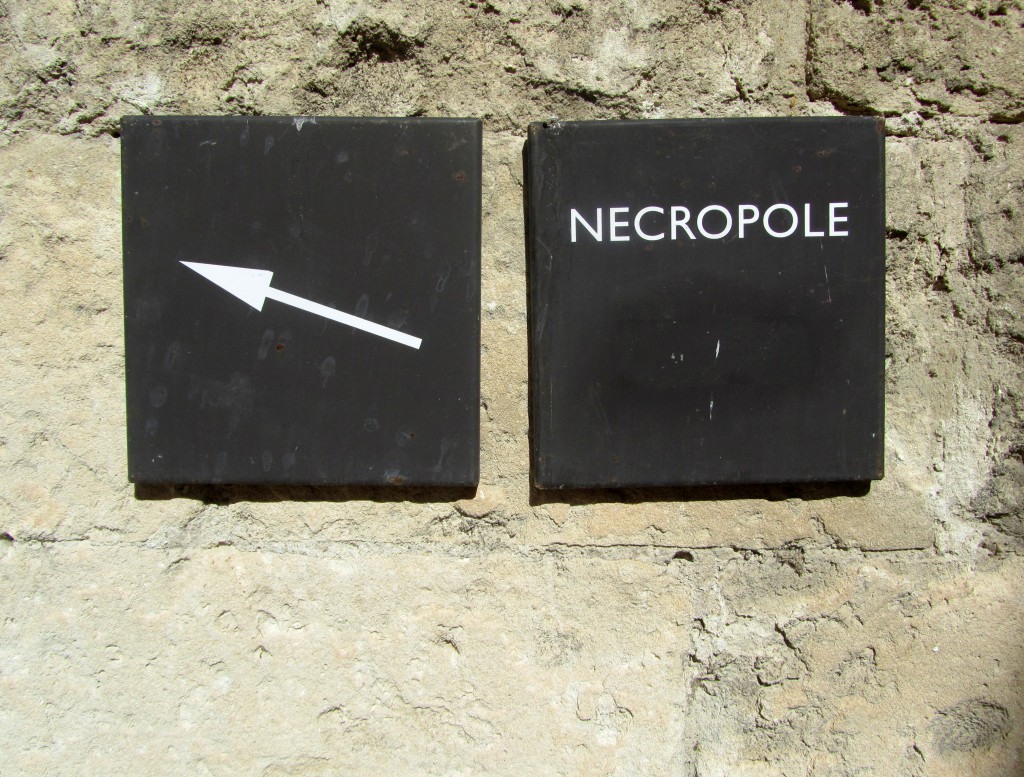
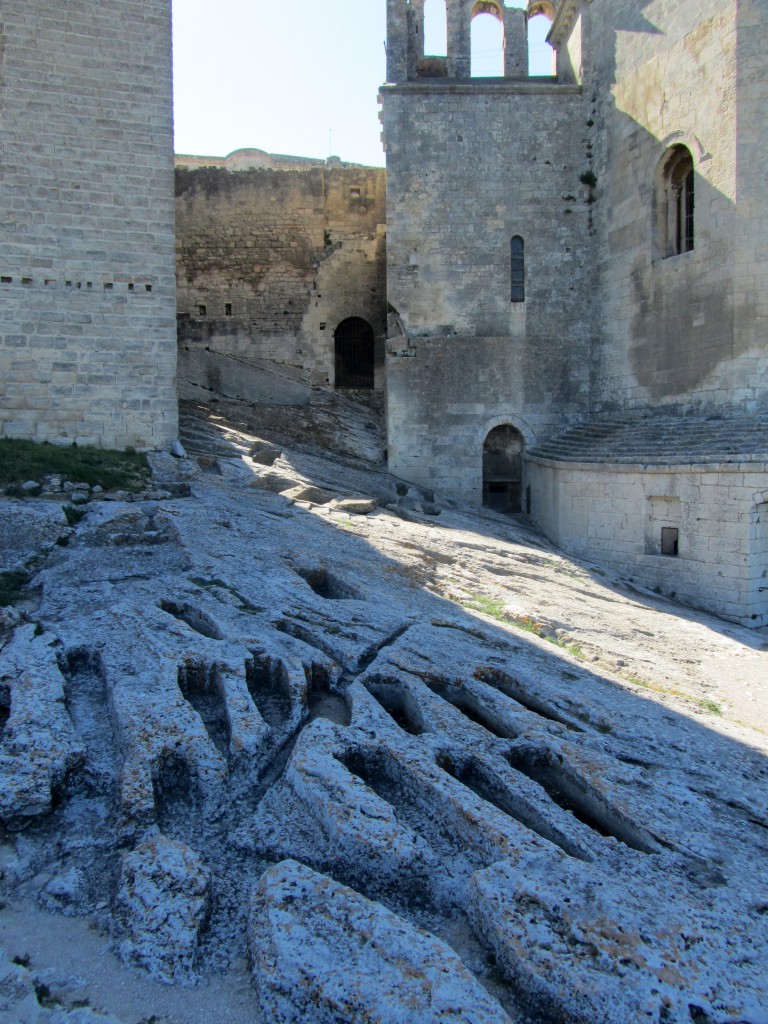
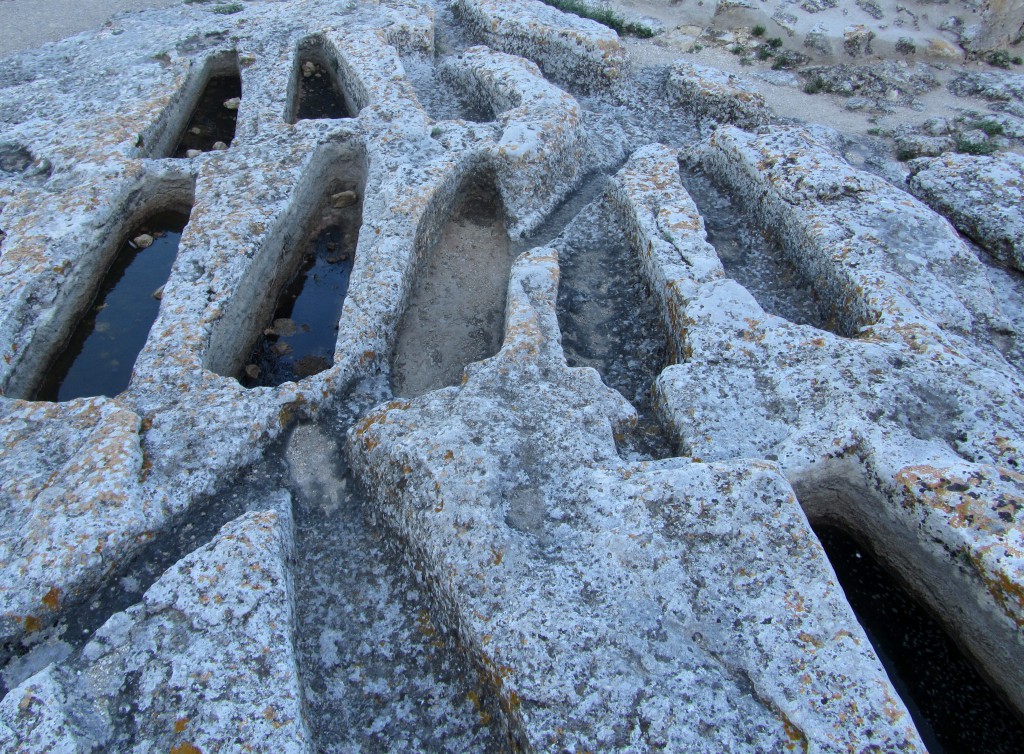

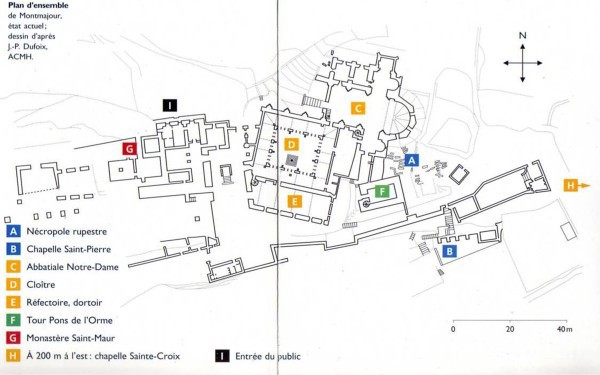
Wonderful post. Beautiful photos.
I recall being in the cathedral at Nantes. A young man began to sing–first an ancient song, then Amazing Grace.
Thanks for the kind words. The acoustics in these places is phenomenal.
What a lovely post. Beautiful photographs as usual, The floating staircase is wonderful.
I’ve just been in Narbonne, the cloisters there are also amazing.
and LOOK at those snails!
Thanks Sarah. I’ve seen Narbonne from the A9, the cathedral seems to float like an enormous ship. I hope you’ll write about your visit.